
Projects
Find out more about projects conducted by members of The Bodies, Emotions and Material Culture Collective at The University of Manchester.
Current Projects
Albrecht Dürer’s Material World: In Melbourne, Manchester and Nuremberg
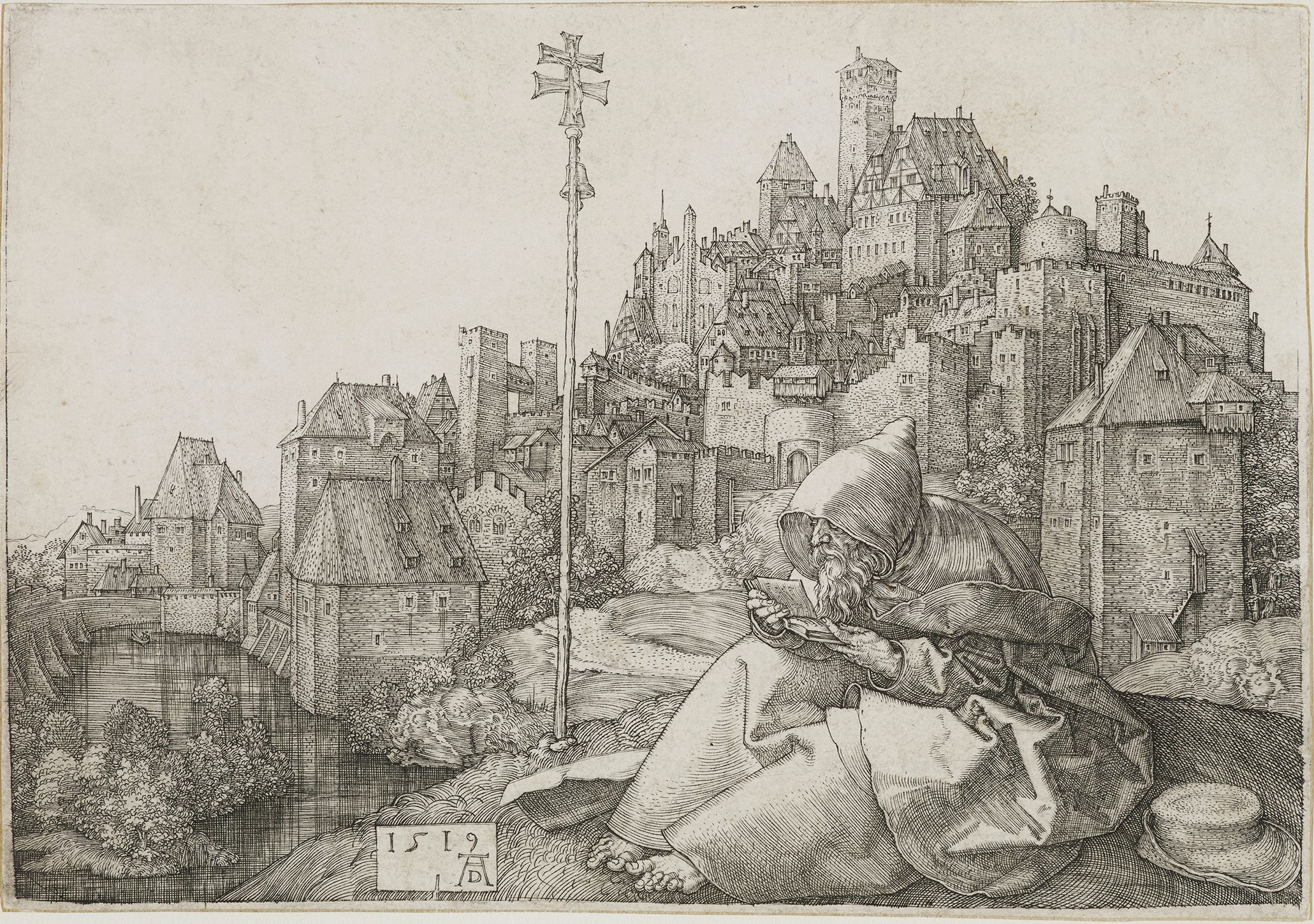
By Jenny Spinks
Albrecht Dürer’s Material World: In Melbourne, Manchester and Nuremberg is an Australian Research Council-funded research and exhibition project that brings together an international team of scholars from Australia, the UK and Germany to examine the significance of the ‘material Renaissance’ for the art of Albrecht Dürer. The project’s distinctive interdisciplinary focus provides a new account of the relationship between the material, sensory world of early modern Europe and its print culture. The team comprises established Dürer scholars, art historians, and historians of material culture: Jennifer Spinks, Matthew Champion, Dagmar Eichberger, Sasha Handley, Stefan Hanß, Edward Wouk, and Charles Zika. Members of the research group also co-curate an exhibition hosted by The Whitworth, Manchester: the first major exhibition of the Whitworth’s outstanding Dürer collection in over half a century that will offer a new perspective on Dürer as an intense observer of the worlds of manufacture, design, and trade that fill his graphic art.
For more information, see the project’s website
https://www.duerersmaterialworld.org/
On the exhibition, see this announcement
Albrecht Dürer, Saint Anthony Reading, 1519. Engraving. The Whitworth.
Bodyweight in Early Modern Germany
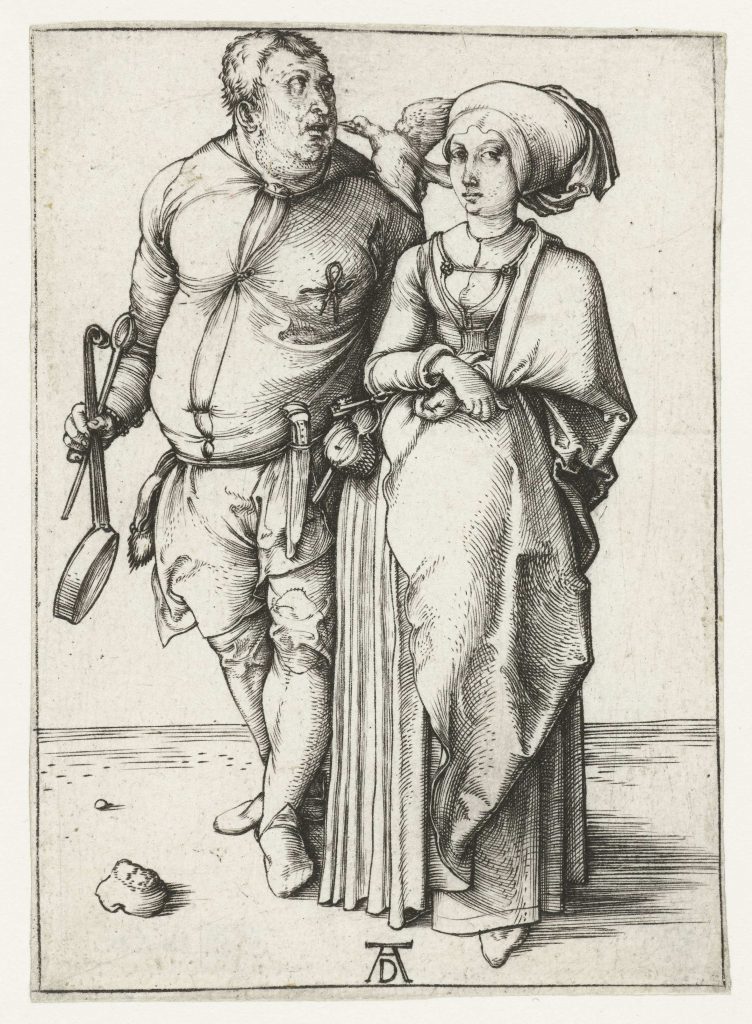
By Dr Holly Fletcher
This project is the first extended study of bodyweight in early modernity. It explores how contemporaries conceived of ‘fatness’ and ‘thinness’, uncovering both the cultural and material significance of bodily size and shape in the German-speaking regions across the sixteenth century. It relates ideas about bodyweight to shifting ideals for German women’s and men’s bodies in this period, further considering how such fashionable forms were confronted by the actual embodied experiences of early modern protagonists. By showing that bodyweight mattered in early modern Germany, the project challenges the common view that concern with body size is a modern phenomenon and that if fatness was considered at all in past societies, it was merely understood as a sign of wealth and prosperity. Instead the project demonstrates that such concerns were ever-present in sixteenth-century Germany, becoming embedded in wider discussions regarding religion, gender, selfhood and society.
To examine the wide-reaching significance of bodyweight in this society, the project uses a diverse set of sources including visual images and material objects, self-narratives, literary texts, sermons and moralising works, cookery books, medical texts and travel accounts. It also brings together a range of fields of study including the history of the body, the history of emotions, religious history, medical history, food history, and the study of visual and material culture. Through this interdisciplinary analysis the project argues that ideas about bodyweight permeated almost all areas of contemporary life. The size and shape of the body held consequences for notions of personal identity, femininity and masculinity, and understandings of the ageing body. Bodyweight was implicated in personal relationships, particularly between spouses, and it could also be conceived of in terms of cultural belonging, including in relation to specific environmental contexts. Germans, for instance, were understood to be fatter and more solidly build than southern Europeans thanks to the cold and northerly climate of Germany. Moreover, ideas about bodily form and the flesh could be integrated into fundamental debates about what it meant to be a Christian, including the nature of the resurrected body and the matter of the Eucharist. The project thus demonstrates how the size and shape of the body could be made to matter in specific ways and in particular contexts, as part of cultural, embodied arguments about values and identities.
Recent scholarship has demonstrated the role of the body as the medium through which early modern people experienced and made sense of the world. This project shows how this experience was itself moulded by perceptions of bodily size and shape. In uncovering this significance, the project transforms our understanding of how early modern Germans conceived both of themselves and their surroundings, offering a new lens through which to study human experience in early modernity. This exploration of the cultural significance of bodyweight, fatness and thinness, is also highly pertinent to current discussions concerning body image, fat acceptance, obesity and public health.
Albrecht Dürer, The Cook and his Wife, 1494-1498. Rijksmuseum, Amsterdam.
The Clergy and Artistic Recreation in Early Modern England
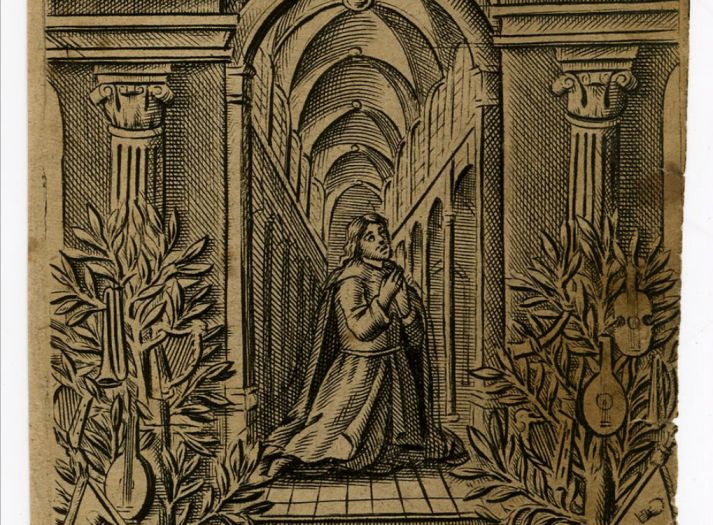
by Dr Hannah Yip
‘The Clergy and Artistic Recreation in Early Modern England’ is funded by a Leverhulme Early Career Fellowship. This project investigates Protestant clergymen’s artistic avocations in post-Reformation England, presenting these ministers from a new and unfamiliar angle by delving deeply into their social and cultural lives. Combining literary, visual and musical sources, it shows how these highly influential individuals in early modern English society used their extracurricular skills and creativity to enrich the lives and faith of their congregations and patrons. In addition, the project seeks to argue that, contrary to prevailing scholarship, artistic polymathy was not the sole preserve of courtiers and the nobility, but also a hallmark of the professional classes below them. In doing so, it reveals the extent of Protestant clerics’ investment in the arts in an era in which attitudes towards the use of music and the arts in worship were complicated by religious upheaval in England and Europe.
Existing research on Protestant ministers’ activities in the English Reformation revolves around their scholarship and substantial involvement in contemporary politics, with very little reflection upon their creative endeavours away from the pulpit and the study. This project argues that, as one of the most educated groups in society and the largest profession in sixteenth- and seventeenth-century England, they also represent a fascinating case study to explore broader historical and modern-day debates on the question of specialism versus generalism in professional life.
Robert Vaughan, Frontispiece engraving for John Bartlet, The Practical Christian (London, 1670) (detail). British Museum.
Cultural Political Economies of the Global East African Ivory Trade, c. 1840-1989
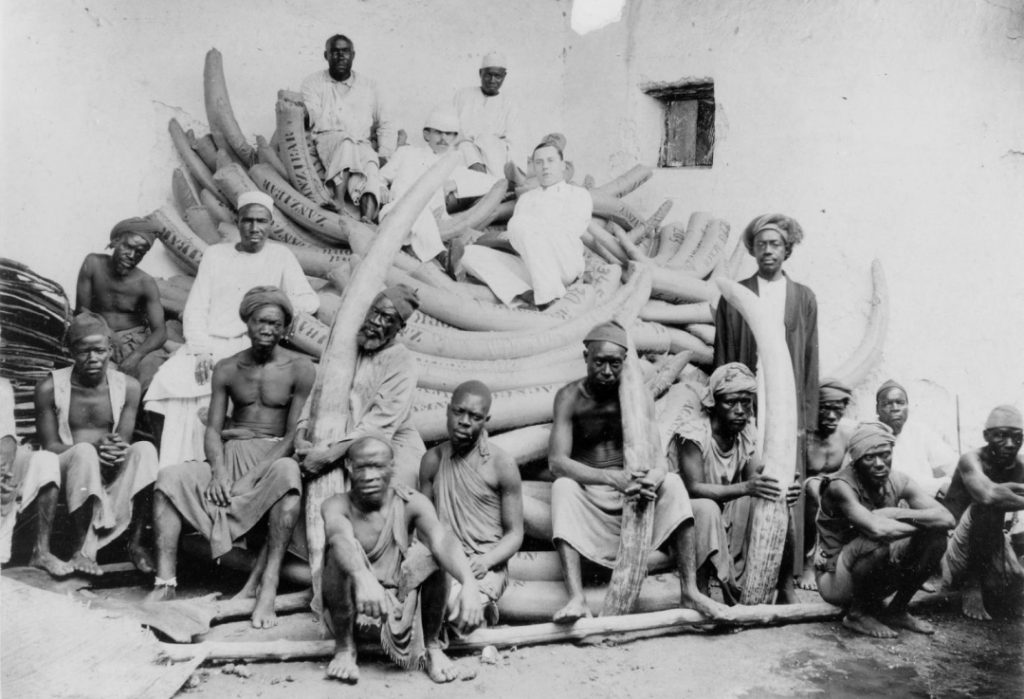
By Alison Bennett, Hallsworth Fellowship in Political Economy
As the Hallsworth Fellow in Political Economy at the University of Manchester, Ali’s current research explores the history of the eastern African ivory trade across the Indian and Atlantic oceans. This project uses museum collections and archival research to trace the complex commodity chains of specific ivory objects to Britain, Germany and the US via India, China, and the Middle East between the eighteenth and twentieth centuries. As part of this research, Ali will be exploring the different embodiments and meanings of eastern African ivory for different communities, including those in eastern Africa itself.
Pratt, Read Corporation Records, NMAH-AC0320-0000002, National Museum of American History, Smithsonian Institution.
Environment, Emotion, and Diet in the Early Anglo-American Colonies, 1570-1660
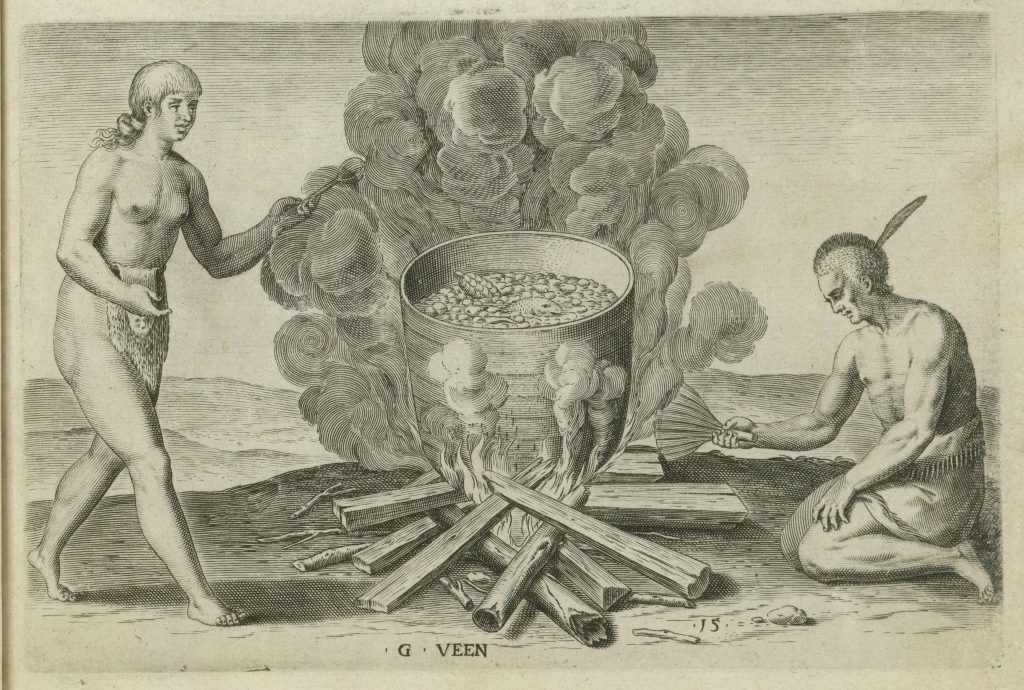
By Dr Rachel Winchcombe, Leverhulme Early Career Fellowship
My Leverhulme project investigates eating practices, access to food, and the connections between health, migration, and diet in a colonial context. The project breaks new ground by juxtaposing colonial environmental history and the history of emotions, and by adopting an interdisciplinary methodology that foregrounds the co-dependencies of colonists, Indigenous peoples, enslaved people, and their physical environments. In doing so, the project demonstrates how significant food provisioning, production, and consumption were to the development of distinctive colonial settlements and the emotional communities associated with them while also demonstrating the creativity and agency of the natural world and its produce. By prioritising food production and dietary habits as the lens of analysis, the project will reveal the vibrancy, resilience, and influence of Indigenous and African foodways and food culture on the early English colonies.
Through an innovative study of the full spectrum of food-related evidence, both textual and material, this project connects ideas and prescribed practices found in texts, with everyday experience as evidenced through surviving artefacts. Using archaeological assemblages, and advanced techniques like organic residue testing, alongside the analysis of visual and textual sources documenting colonial dietary practices, this methodological approach sheds new light on the relationship between textual representations of colonial food provisioning and material practices surrounding food consumption.
The project asks how medical understandings of diet and emotion impacted English colonists; how changes to customary diets and environments impacted emotional health in a colonial context; how food management practices shaped interactions between colonists, Indigenous communities, and enslaved people; and how the study of material culture can help decentre English perspectives and emphasise those of Indigenous and enslaved people.
Theodore de Bry, copper engraving, “Their Seetheynge of their Meate in Earthen Pottes,” in Thomas Harriot, A Briefe and True Report of the New Found Land of Virginia (Frankfurt: Theodore de Bry, 1590). Courtesy of the John Carter Brown Library.
Hair, Social Order and Cultural Encounters in the Habsburg World, c. 1490-1700
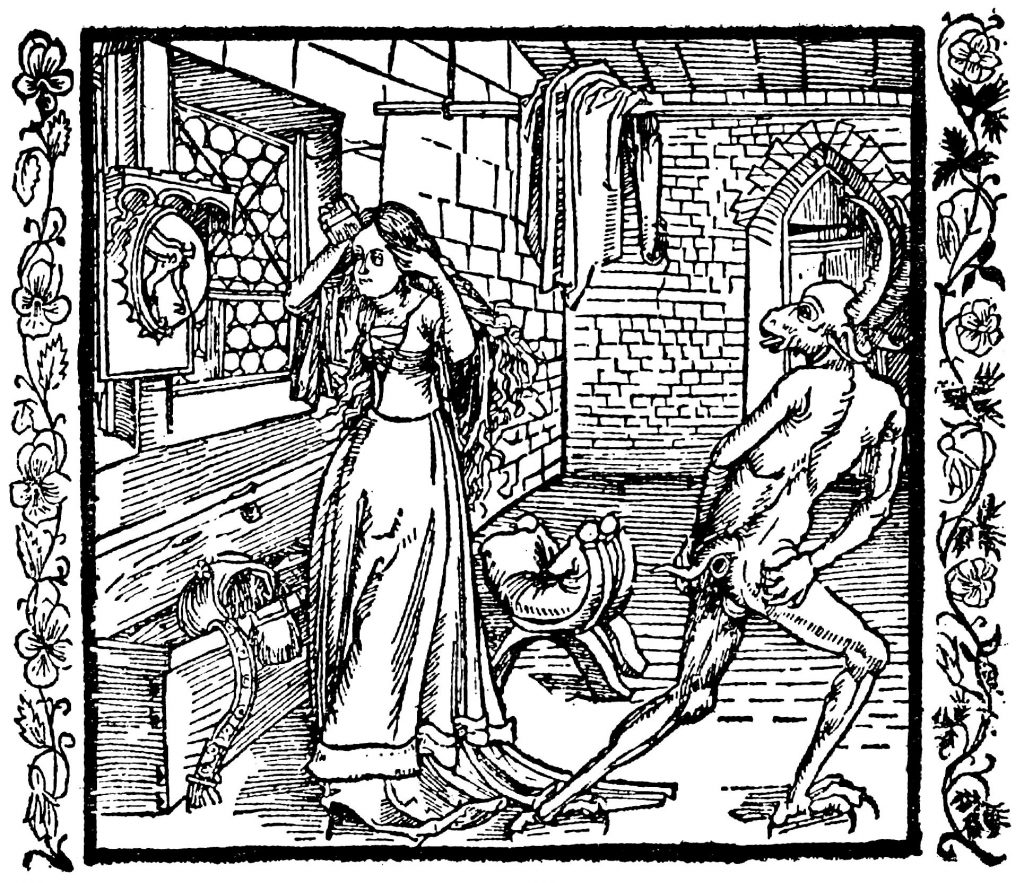
By Dr Stefan Hanß, The Philip Leverhulme Prize, 2021-23
This project examines the history of hair in the early modern Habsburg world. Stefan’s research unpacks how hair functioned as a cultural marker to express, convey, alter, and negotiate identities, subjectivities, gender, and societies in a time of radical change.
Reformation upheavals in the Central-European Habsburg heartlands and the Iberian imperial programme of global expansion, and the cultural encounters it entailed in the Americas, Africa, and Asia, dynamised the meanings of hair in the early modern period. Stefan’s project explores how everyday performances of hair mirrored religious, social, political, cultural, artistic, and material changes in an increasingly global and both religiously as well as socially contested Habsburg world.
Stefan is interested in the significance of hair for early modern materialized identities. This project explores what it meant to live in what he termed a “hair-literate society”. People’s everyday performances of hair and their innovative use of head, facial, body, and animal hair mirrored fundamental religious and social changes across the empire. In the estate-based society of early modern Germany, Spain and its dominions and colonies across Europe, the Americas, Asia, and Africa, authorities regulated hairstyles. Nevertheless, hair-literate subjects innovatively managed their appearance by visiting barbershops, using remedies and dyestuff, and adopting beards and hairstyles. This period experienced a Renaissance of the beard, thus, after the late medieval fashion of well-shaven faces exuberant and characteristic beards became in vogue – a trend that also diversified people’s means to stage identities. With the rise of new artistic genres and techniques like portraiture and engraving, artists invested renewed efforts into the life-like representation of hair. At the same, artisans stirred innovation in the manufacturing of hats, caps, bonnets, and veils, globally traded furs, hair braids, dyestuff used for colouring hair, and hair accessories. In such contexts, the bodily material of hair was a powerful means to stage, and shape, emotional lives.
Habsburg subjects across the social ladder engaged with a highly creative and experimental material culture of hairdressing that was driven by medical understandings of the body and a globally connected material world. Addressing the whole of the geographically diverse Habsburg colonial world, this project charts the significance of hair for materialised identities, cultural hierarchies, and early concepts of race and power in this early modern empire.
Further reading:
Stefan Hanß, ‘Hair, Emotions and Slavery in the Early Modern Habsburg Mediterranean’, History Workshop Journal 87, no. 1 (2019): 160-187, https://doi.org/10.1093/hwj/dbz004.
Stefan Hanß, ‘Face-Work: Making Hair Matter in Sixteenth-Century Central Europe’, Gender and History 33, no. 2 (2021): 314-345, https://doi.org/10.1111/1468-0424.12538.
©zeno.org
The Haunting at the Rectory: A Story About Women Who Wanted to be Heard
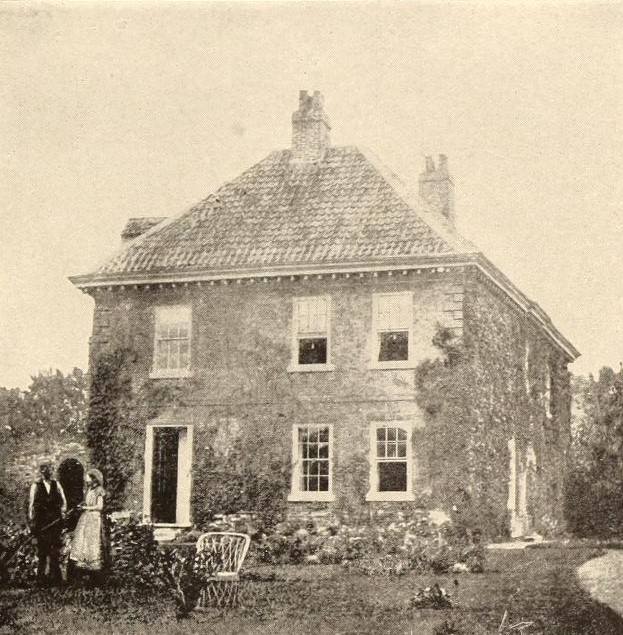
By Professor Sasha Handley
In the winter of 1716-17, a ghost tormented the inhabitants of Epworth rectory in Lincolnshire. Known as ‘Old Jeffrey’, he was first heard by one of the maidservants, knocking on the dining-room door and groaning like ‘a dying man’. Becoming ever more violent, his visits continued for almost two months. The children of the house saw Old Jeffrey in the shape of a strange animal, which they described ‘like a badger, only without a head’, scurrying beneath their beds. Trembling and sweating in their sleep when Old Jeffrey was near, the children recalled, terrified, how one of their beds was lifted into the air by the malevolent spirit. Old Jeffrey reserved his most ferocious violence for Samuel, the head of the household, who wrote in his journal that the spirit had thrice pushed him viciously. Frantic, the family sought every means they could think of to expel the spirit. A large mastiff dog was purchased. Prayers were sent, to no avail. Equally ineffective was the blowing of a loud trumpet, the shooting of a pistol, and the exorcism from a local minister and family friend. Yet nothing they tried deterred Old Jeffrey.
Instead, without warning, Old Jeffrey’s visits came to an inexplicable end in late January 1717. Yet the damage was done. The memory of his torments opened a Pandora’s box of emotional anguish and recriminations amongst the rectory’s inhabitants, who speculated for years about the cause of the haunting. For the women of the house, the finger of blame pointed firmly at its master. Letters circulating amongst the family members reveal the intimate history of a family at war. Susanna, Samuel’s long-suffering wife, had been plunged into poverty by her husband’s debts, and abandoned for a full year in 1702. The couple’s seven daughters blamed their troubled childhoods, failed courtships, abusive and unhappy marriages, and ill health on their father’s high-handed behaviour, cruel interventions, and financial mismanagement. Emilia was convinced that Old Jeffrey ‘had a particular spite at my Father’. Old Jeffrey’s visit exposed deep and rifts within the Epworth rectory, but this was not an ordinary story of family breakdown. The family whose lives were thrown into turmoil during the winter of 1716-17 were named Wesley, and in the years following the haunting they became one of the most famous families of the eighteenth century. Amongst their number were John and Charles, the founders of the global Methodist movement, whose evangelical mission was underpinned by a deeply rooted belief in a vibrant spirit world. How, and to what consequence did Old Jeffrey’s ghost spark this attachment to the supernatural world?
This book will deliver the first inclusive history of this extraordinary and uniquely detailed haunting. It aims to convey three central messages:
- The book uncovers the long history of women’s engagement with ghost reports to publicly air their grievances. The Wesley sisters, and their mother Susanna, were the latest in a long line of women that framed ghostly reports as effective narratives of protest against domestic aggressors and used them to negotiate relationships of hierarchy and dependence.
- The so-called ‘age of enlightenment’ has been overwhelmingly characterised as one of widespread ‘disenchantment’, scepticism and ridicule of supernatural reports. This characterisation reflects a dominant focus on the published treatises of male public intellectuals. By contrast, , this book reveals the circumstances in which ghost reports were taken seriously, exploring the meaning of ghost stories from the bottom-up. The correspondence of the Wesleys reveal the fractious interpersonal dynamics and emotional conflicts that made Old Jeffrey’s torments both chilling and meaningful to those that experienced them at first hand – clearly identifying emotions as drivers of historical change.
- The book draws on a rich archive of material evidence to explain why ordinary households were the most common locations of ghostly hauntings. The book examines the supernatural associations attached to fireplaces, attic spaces, bedsteads, and staircases, to explain why they were understood as sites of vulnerability to supernatural attack, and in need of careful regulation and material defence.
The book is under contract with Doubleday and due for publication in 2023.
Epworth Rectory, c.1890 from G.W. Edmondson, From Epworth to London with John Wesley (Cleveland, Ohio: Cleveland Printing and Publishing, 1890).
Intimate Radicalisms: Feeling Political in Nineteenth-Century Britain
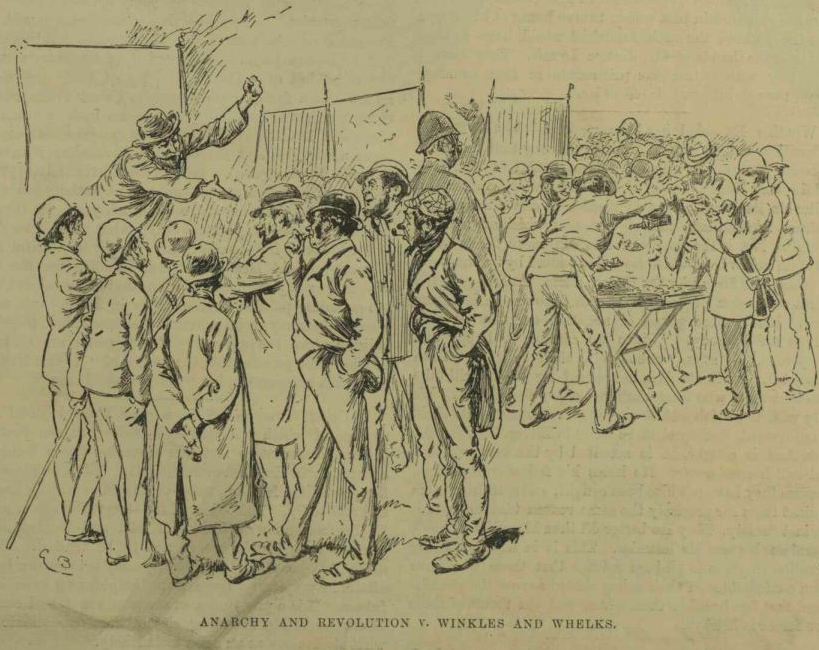
By Dr Laura C. Forster
There is no politics without feeling. People are moved to political positions. But what moves them? How did ordinary people become politicised in the nineteenth century? ‘Intimate radicalisms’ addresses these questions by interrogating intimate practices that were politically generative for radical and socialist communities in nineteenth-century Britain. Oppositional politics of the nineteenth century are the subject of rich and varied scholarship: we know how socialist doctrines developed, how radical politics were communicated on the page and the platform, and that politics ‘happened’ in innumerable forms and forums. But what of the bodily, emotive, and experiential world of radical politics? ‘Intimate radicalisms’ argues that without appreciating these intimate feelings and practices we cannot grasp the power of political ideas.
Developing a unique approach grounded in the history of ideas and recent interdisciplinary methodologies on emotion and affect, ‘Intimate radicalisms’ foregrounds intimate practices to offer an alternative lens through which to understand the genealogy of radical and socialist thought in Britain, c. 1815-1914. For politically minded people, practices such as sharing food, hosting guests, and collective mourning both enacted forms of communal politics, and provided opportunities to talk about such politics. Understanding these intimate practices, therefore, is key to understanding both the transmission and the construction of political ideas. The project focuses on three distinct types of political encounter – political funerals, lecture tours, and anniversaries and celebrations – across the century, and undertakes a comprehensive study of intimate practices associated with these events.
‘Intimate radicalisms’ signals a shift away from the canons of intellectual history and from the disembodied context of discourse. Instead, the project conceives of the history of political thought as intimate, embodied, sociable, active, and often most visible in informal spaces of encounter. The three events underpinning ‘Intimate radicalisms’ were commonplace, and they were organised and attended by a broad church of groups and individuals across the century. The practices shaping all three were communal, the subjects emotive, and their occurrence demanded hospitality which created additional encounters in living rooms, pubs and at firesides. The project interrogates these public events to show how much of their political potency came from the unique intimacies they generated. Simultaneously then, intimacy, conventionally considered private and individual, will be shown to have important collective political implications.
Looked-After Children: Fostering and Adoption in Britain, 1700–1839
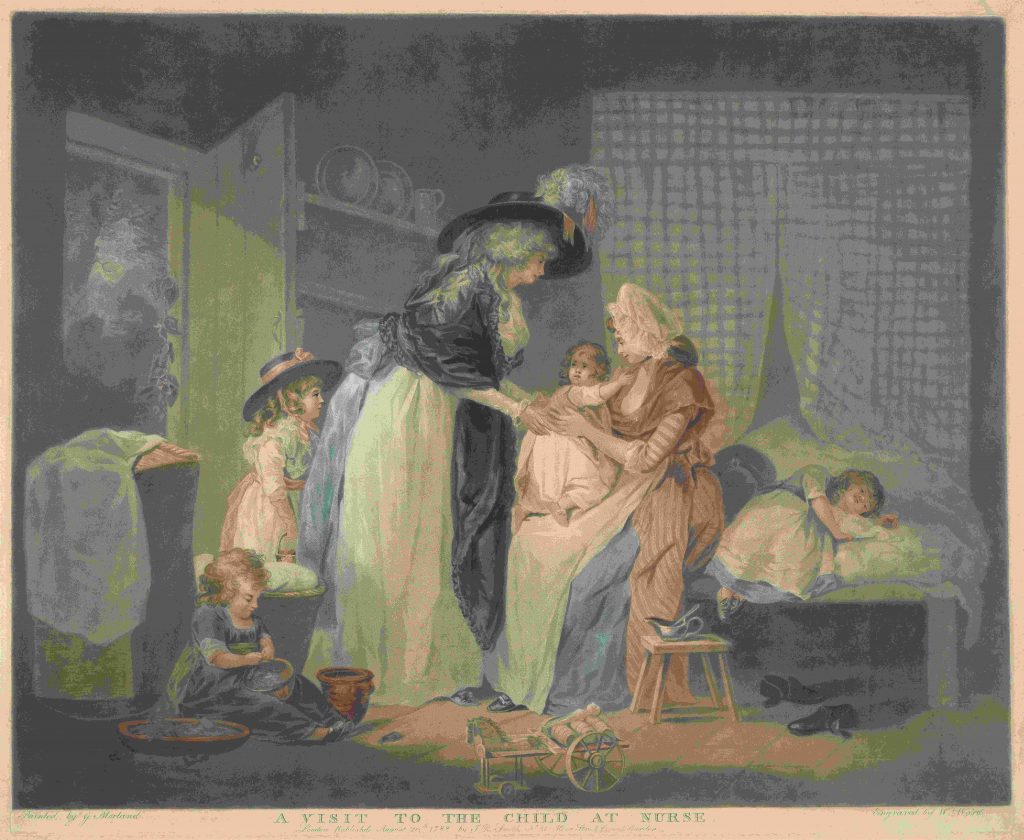
By Dr Kate Gibson
The eighteenth century is often presented as a period where the nuclear family and parent-child bond was increasingly idealised. Within this model, the fostering and adoption of children is seen as a last resort, experienced only by orphans or the very poor and marginalised. This image does not, though, fit with what else historians know about the society and economy of eighteenth-century Britain. Mothers often worked, and families were often broken up and dispersed through death, poverty or occupational demands. The state—through the poor law and institutions such as the London Foundling Hospital or the Edinburgh Orphan Hospital—recognised that parents were often unable to care for children and provided alternatives. What impact did this dispersed care have on children as they grew up, and on how families functioned in this period? This project is the first sustained historical study of fostering—the care of a child in a household which does not include their biological parent—as a form of childcare in eighteenth-century Britain.
Using correspondence and diaries written by children and their families, poor relief documents, court records and Foundling Hospital records, the project will reveal the extent to which fostering was widespread across the social scale. It investigates wider relationships between the child and the rest of the household, particularly foster-siblings, as well as their inclusion in broader concepts of family, defined by blood, law, property inheritance or emotion. It examines the motives behind fostering, the extent to which care work was gendered, and its impact on household income. The project analyses the impact of care over a child’s lifetime, comparing access to and the nature of care according to class, race and gender. The project is part of a growing challenge to the marginalisation of care work in historical research, with implications for our understanding of women’s historical workforce participation and current assumptions about “traditional” caring roles as gendered, low paid and low skilled, as well as the ways that we define ‘family’.
William Ward (after George Morland), A Visit to the Child at Nurse, 1788, Mezzotint on moderately thick, moderately textured, blued white, laid paper, Yale Center for British Art, Paul Mellon Collection, B1977.14.12019, https://collections.britishart.yale.edu/catalog/tms:31624.
Making Babies in Early Modern England
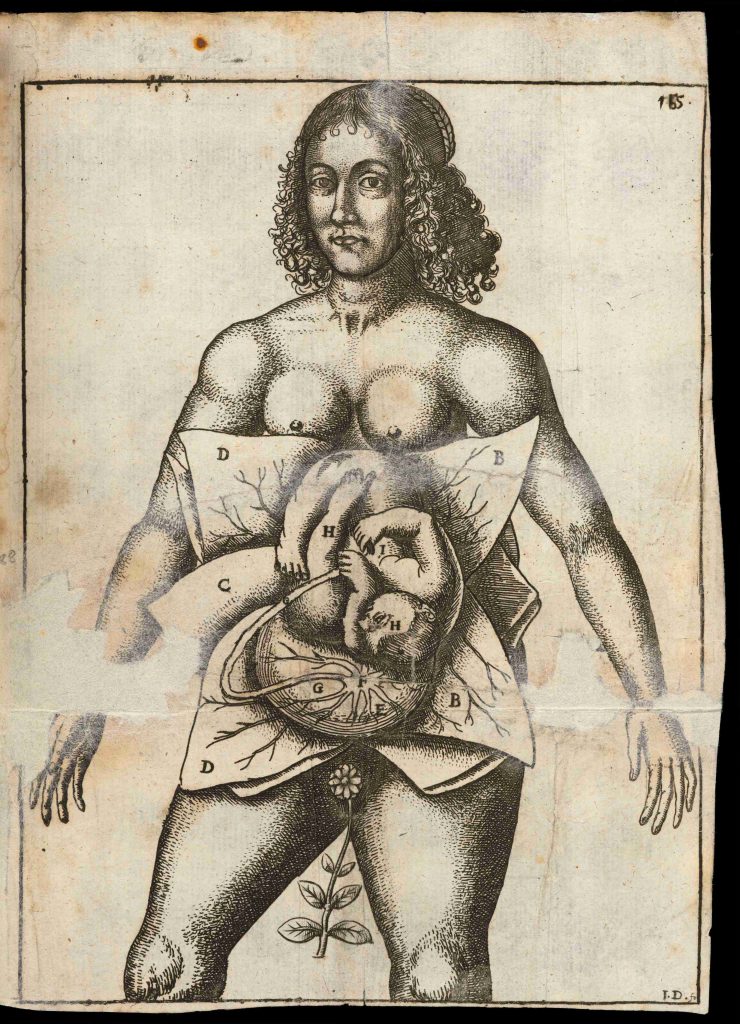
By Dr Leah Astbury
Procreation was the chief purpose of marriage in early modern England. The family and its continuation was central to Protestant reformers’ project. Getting pregnant was a blessing from God. Moreover, producing an heir was essential in perpetuating the family name, title and assets. Having a healthy, or ‘lusty’ infant was paramount to the religious, civic, financial and social reputation of families. Generation was not an experience sequestered away in the domestic realm but intersected with politics, religious and civic concerns.
This project examines the experience of pregnancy, childbirth and after-birth care in early modern England. It centres on households between 1550-1750, a period in which individuals avidly recorded their health, daily activities and the way they managed their household. Concomitantly, a burgeoning print culture sought to instruct and govern domestic behaviour. This project finds that childbirth was not the secretive female-only ritual that previous historical accounts have assumed. Babies were made in, by and for families.
Making Babies draws on the paperwork of approximately fifty families, largely elite, gathered from 45 archives and libraries in the UK and US, including correspondence, diaries, commonplace books, account books, recipe books and spiritual meditations.
Jane Sharp, The Midwives Book. Or the Whoel Art of Midwifery Discovered. Directing Childbearing Women How to Behave Themselces (London: 1671). Wellcome Images. CCBY.
Non-Catholic Burial Grounds: Spaces of Diversity in the Early Modern Mediterranean
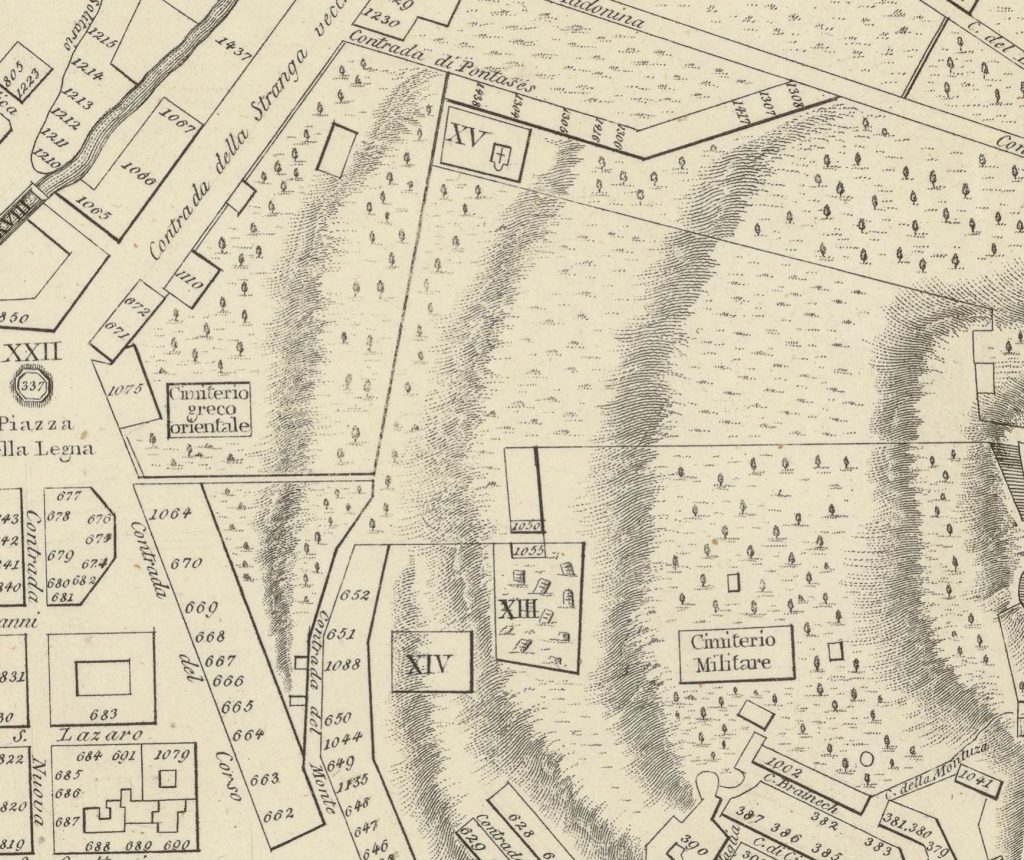
By Dr Marina Inì
The project analyses the presence of non-Catholic burial grounds within key western Catholic Mediterranean cities. It seeks to understand the role of such spaces in the cross-cultural relationships between different communities of the city of Marseille, Genoa, Livorno, Messina, Ancona and Trieste in the seventeenth and eighteenth centuries. Catholic Canon Law forbade the burial in consecrated grounds of infidels, heretics and excommunicated subjects creating issues regarding the burials of people of non-Catholic faith. Members of foreign communities in Catholic cities were initially often buried outside the city gates or in open fields without tombstones or fences. The endowment of official non-Catholic cemeteries by local and state authorities was the result of complex and lengthy processes which took place in different forms in specific contexts and cities. By investigating this phenomenon, the project aims at improving and deepening our understanding of the relationship between the dominant Catholic local group and foreign communities in the diverse environment of the early modern Western Mediterranean.
The study of non-Catholic burial customs as important social and cultural practices is essential to the analysis of the diverse cultural outlook of key free port cities and trading hubs of the Western Mediterranean. While Jewish burial grounds were normally granted in different States of the Italian peninsula, other communities had to fight for the ‘privilege’ to have a proper fenced burial space. From the late seventeenth and eighteenth century, an urban trend emerged in key western Mediterranean cities which started to adopt official non-Catholic burial grounds for foreign communities. This trend coincided with and followed the transformation of the cities here considered into free ports. The creation of a free port corresponded with the adoption of liberal policies of religious and ethnic tolerance. The aim was to favour new settlements of merchant communities to increase the international trading trade. This, in turn, coincided with the increasing request for spaces in which each community could worship their faith and bury their dead.
By examining the presence of non-Catholic spaces in the urban context of Mediterranean cities, the project highlight issues of tolerance, intolerance, acknowledgement and negotiation between different faiths and cultures. Indeed, despite the adoption of more tolerant policies in free ports, acculturation was not mutual between the dominant Catholic community and foreign ones. The relationship between foreign groups and the host society was characterised by a constant state of negotiation both officially with the authorities and in quotidian life in the use of urban spaces. Thus, recognition of certain rights by Catholic cities, such as the right to a proper burial space for non-Catholics, was not spontaneous and should be investigated to fully comprehend the relationship between authorities and foreign groups.
By taking up the theme of cross-cultural interactions and urban history, this project focuses on the role that non-Catholic burial grounds played in defining the urban space of the city. Separated burial grounds were indeed tools used by the local authorities in managing anxieties linked to religious impurity; however, they were among the few settings in which foreign communities expressed, even if in limited ways, their agency. The request for a proper burial space in Catholic Mediterranean cities came from well-established and prominent foreign communities which had a permanent setting and rooted history in the urban panorama. Such groups had a role, even if regulated, in building the urban space and society.
The project significantly contributes to those trends in the scholarship aiming at restoring richness to the representation of early modern societies often too simplistically defined as ‘multicultural’; the power relationship between civic authorities and communities was extremely complex and usually well defined by a precise hierarchy well evident in the issue of non-Catholic burial practices.
Area with the Greek, Jewish and Protestant cemeteries in Trieste, detail from Ferdinando Klausberger, Pianta della città e porto franco di Trieste, 1806.
The Professional, Religious and Masculine Identities of Anglican Clergymen, c.1660-1800
By Dr Ben Jackson
Ben’s project, funded by a British Academy postdoctoral fellowship, examines the life-writing of Anglican clergymen, the largest and most socially and economically diverse professional group in eighteenth-century England, from the Restoration in 1660 to the Evangelical Revival of the early nineteenth century. The project charts how the clergy responded to, and experienced, the professionalisation of their vocation, established their clerical households, contributed to local government and education, embodied virtues of Christian masculinity in their parishes, and embraced the itineracy and mobility of their profession both domestically and internationally. While doing so, the project examines not only these social and economic patterns but also the lived experiences of individual clergymen. In doing so, it asks how clergymen negotiated conflicting demands of their gender, profession, and denomination, within their homes and communities and on their travels. The project aims to provide a new account of how a significant eighteenth-century masculine group saw themselves and what determined their experiences.
My examination of Anglican clergymen at home, in their parishes, and on their travels between 1660 and 1800 reveals the wide-ranging influences that professional and religious identity had on eighteenth-century masculine social identities, as well as histories of the eighteenth-century parish, education, travel, mobility, diplomacy, empire, and religion. The clergy is an understudied group, yet their diverse roles and responsibilities provide a uniquely extensive case study to examine developments in eighteenth-century masculine selfhood and identities. Clergymen’s changing position in the early modern social hierarchy and their mobility between parishes, regions, and nations enable the project to provide a more transnational picture of eighteenth-century masculinity and to centre mobility in the construction and experience of men’s lives. This project examines rank-and-file Anglican and Nonconformist clerics’ personal documents from diverse regional settings including London, York, the North West, and South East as well as those who travelled abroad as tutors, chaplains, and missionaries.
Reflecting Devotion: Lustrous Materials in England, Scotland, and Ireland, 1603–1700
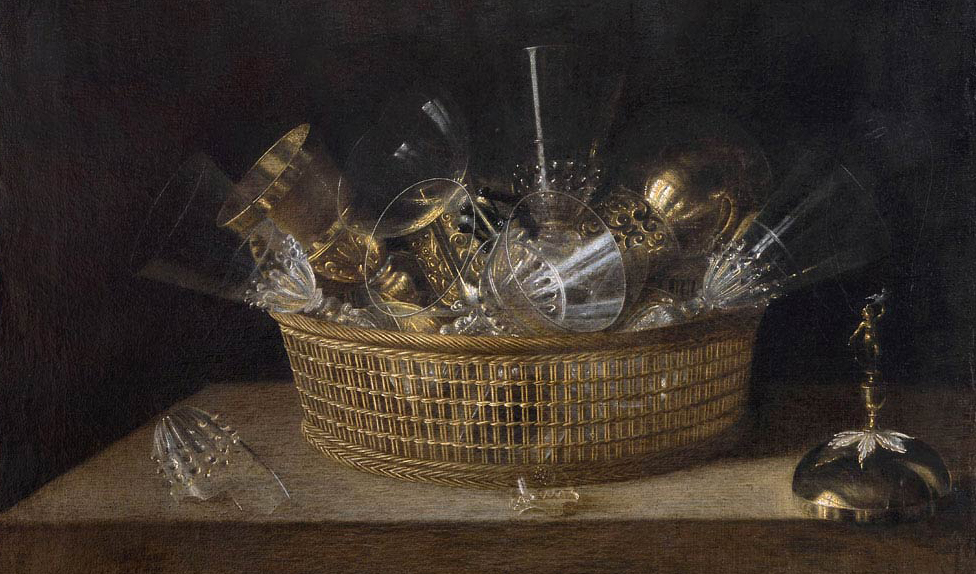
By Dr Catherine Evans
This Leverhulme Trust funded project combines cultural history and literary studies to examine how lustrous materials – pearls and glass – transformed seventeenth-century devotional practices. Pearls and glass were both globally traded, luxury goods: one naturally occurring, the other man made. The early modern pearl trade was characterised by extraordinary exploitation, devastating the ecology of Caribbean fisheries and subjecting thousands of enslaved divers to horrific injury, and drowning. Meanwhile, the production of glass led to widespread deforestation and drove colonial land grabbing.
In both religious and scientific writing, pearls and glass were objects of curiosity and wonder. Anne Conway asked ‘Chrystal … is so hard and solid, how can it receive so many Bodies and transmit them so easily through it?’ Similarly, pearls were seen as proof of God’s mysterious works, as the shining jewels emerged out of the mud of the sea. This innovative work investigates radiant aesthetics through the study of literary texts, decorative objects, utilitarian goods, and architectural space, countering the critical prejudice that pearls and glass are suspiciously frivolous, gaudy, or superficial.
This project draws on the expertise of the John Rylands Research Institute imaging department, who have developed cutting-edge techniques that can reveal how objects have been altered over time. Reflecting Devotion asks if “new” images of old objects can reveal new information and ways of seeing. This anachronistically reflects the debates around sight that took place in the seventeenth century: Protestant practice held that careful contemplation of external objects could lead to divine knowledge whilst the ‘New Science’ of Bacon and Hobbes was predicated on practices of careful observation.
Sébastien Stoskopff, Corbeille de Verres [Basket of Glasses] (Strasbourg, 1644), Musée de l’Œuvre Notre-Dame.
Remaking the Image: Dominicus Lampsonius and the Print as Work of Art
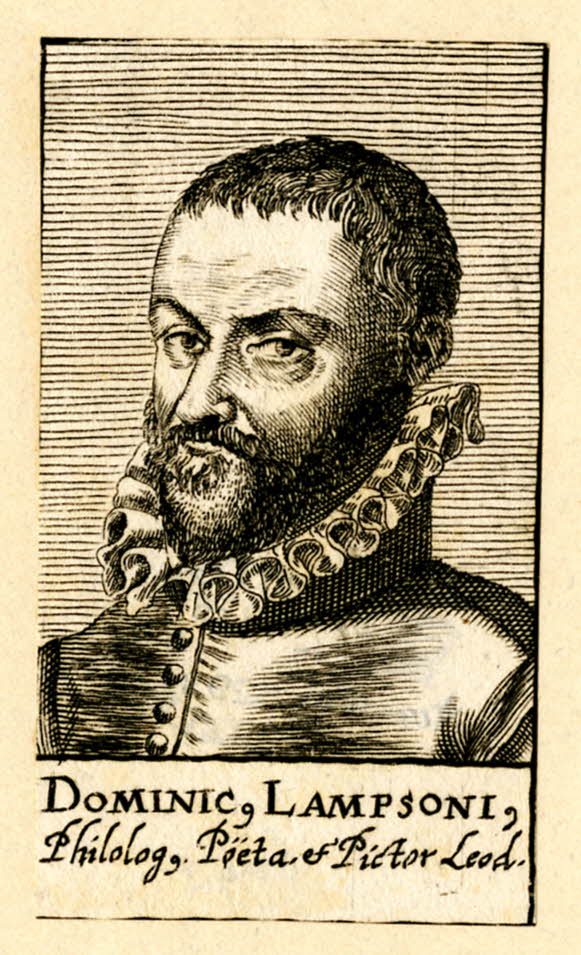
By Dr Edward Wouk
The mid-sixteenth century was marked by intense preoccupation with the nature and function of art. Bruges-born humanist Dominicus Lampsonius’s theorisation of the printed image as a work of art challenged Italian-centred narratives and media hierarchies of the Renaissance. Edward Wouk’s current project focuses on Lampsonius as an art theorist and situates his engagement with print in contexts of crises over representation driven by Reformation and Counter Reformation agendas and by the outbreak of the Dutch Revolt.
Lampsonius’s art theory is embedded in practice, and Wouk’s study draws on a range of sources including letters, treatises, and inscriptions – many as yet unpublished – as well as printed images and other artworks. It concentrates on his novel theorisation of the print as impression and as work of art. It also reveals a long overlooked Catholic perspective on art and society in the Low Countries and calls into question the impacts of prevailing disenchantment models. More broadly, Wouk’s study probes the interrelationship between the emergence of written theories of art and periods of intense political and social unrest. It breaks down monolithic conceptions of ‘Europe’ beyond any north-south binary and demonstrates how printed images visualised and drove a developing awareness of the distinctly global, transmissible, and generative properties of early modern images.
Dominicus Lampsonius, The Life of Lambert Lombard (1565) and Effigies of Several Famous Painters from the Low Countries (1572), edited and translated by Edward H. Wouk (Los Angeles: Getty Research Institute, 2021) is a first result of this project.
Portrait of Dominicus Lampsonius in Pauls Freher, Theatrum virorum eruditione clarorum (Hofmann, Nuremberg: 1688), engraving, 75 x 42 mm, London, British Museum. © Trustees of the British Museum.
Sleeping Well in the Early Modern World: An Environmental Approach to the History of Sleep Care

By Professor Sasha Handley, Wellcome Trust Investigator Award, 2021-25
What does it mean to sleep well? This is not just a modern concern but something that has exercised individuals and communities throughout history. This project will be the first to address this question by assessing how people’s efforts to sleep well c.1500-1750 were influenced by a distinctive set of environmental relations and linked ‘environing practices’ in which people engaged with their physical surroundings to optimise their sleep timings, source bedding materials, and to prepare soporific tonics. The project’s research team will reconstruct the principal agents, materials and ‘environing’ practices that were used to manage sleep in ecologically distinct parts of Britain, Ireland and England’s emergent colonies of Virginia and Newfoundland, alongside the bodies of medical, botanical, climatic and material knowledge associated with them. The research is important because it brings a fresh environmental history perspective to bear upon cross-disciplinary debates about the significance that physical environments play in shaping healthy and unhealthy sleep habits. It will also be the first to assess the immediate and longer-term impacts of early modern processes of environmental change (e.g. climatic change in the guise of the ‘little ice age’ in northern Europe and early America; the shift from pasture to arable land cultivation and the introduction of new systems of crop rotation; controversial land conversion and reclamation processes) in shaping people’s sleep care practices, which will encourage a reassessment of the assumed primacy of modern ‘watershed’ moments such as industrialisation and the digital revolution in shaping human sleep fortunes.
The project recovers a longer, more complex and more positive history of the sleep-environment nexus that shifts focus away from sleep ‘crisis’ and disorders to environmentally-informed cultures and practices of sleep ‘care’. Characterisations of ‘preindustrial’ sleep habits as homogenous products of harmonious relations between humans and ‘nature’ will also be overturned by examining how a variety of sleep care practices flourished in select localities. The project seeks to reveal how and why early modern communities engaged with their surroundings to optimise sleep, and how they adapted their sleep care practices to cope with environmental change.
Key research questions include:
- How did people understand the relationship between ‘place’ and sleep quality c.1500-1750?
- How did the diverse ecologies of Britain, Ireland, Virginia and Newfoundland shape the materials and practices of sleep care?
- How were practices of sleep care impacted by environmental change c.1500-1750?
- How did changes in medical, botanical and natural philosophical knowledge shape approaches to sleep care c.1500-1750?
- How did economic, social, age, gender and race hierarchies impact the practice and receipt of sleep care?
Thanks to the additional award of a Wellcome Trust Research Enrichment – Public Engagement grant, the project team will also develop an important public engagement and impact project with Ordsall Hall in Salford. The money will help to recreate historic planting schemes for the Hall that will be used to remake early modern soporific tonics and foodstuffs in collaboration with Salford schools. Our aim is to improve the health education and health outcomes of school-age children in Salford through creative outdoor engagement with historical sleep recipes.
Explore the project webpage here.
Wool fragment from blanket, Ephraim Sprague archaeological collection, Connecticut Department of Transportation.
‘Werck der bücher’: Transitions, Experimentation, and Collaboration in Reprographic Technologies, 1440–1470
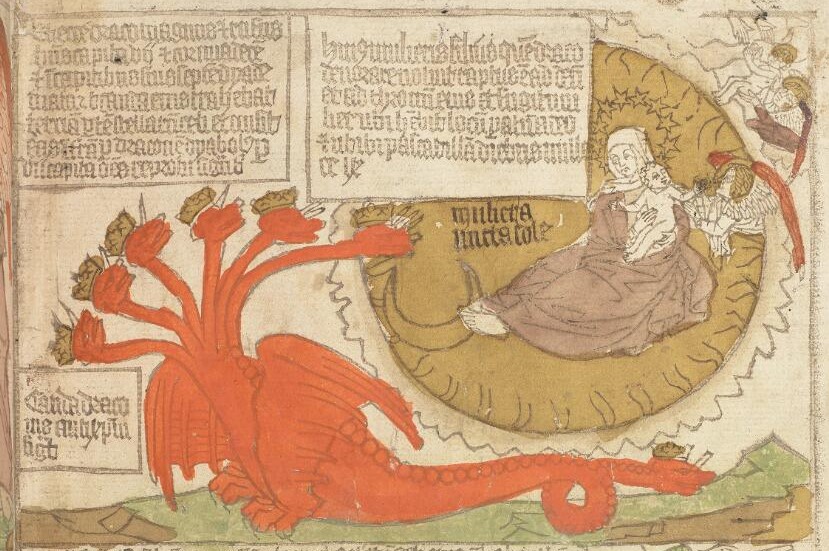
By Dr Stephen Mossman
Our project, led by Stephen Mossman (Manchester), Nikolaus Weichselbaumer (Mainz), Vincent Christlein (Erlangen) and Edward Potten (York), has been awarded around £650,000 across three years (2022-2025) by the Arts and Humanities Research Council and the Deutsche Forschungsgemeinschaft in the UK-German Funding Initiative in the Humanities competition for 2020/21.
We aim to redefine what is understood as the invention of printing: the single most important technological innovation of the European Middle Ages. The enduring idea that this invention was a sole point of revolution, in which the technology of printing with movable type was brought into the world fully-fledged by Johannes Gutenberg in 1452, is no longer accepted. Instead, the generation between c.1440 and c.1470 must be conceived as a period of ongoing technological experimentation across and between reprographic media. A whole range of such media flourished in that generation: books printed from carved wooden blocks (blockbooks); texts and images printed on single leaves from wooden blocks (woodcuts) or punched metal plates (metalcuts), books and documents printed with movable type (incunabula), and hybrids of all of these. Furthermore, there was almost certainly more than one different method of printing with movable type in existence. These individual printing crafts have been treated hitherto as discrete entities. Hence it has been supposed that the relationship between them, and thus between their creators, was competitive. Yet how these technologies intersected in this seminal period is currently a matter of conjecture, not knowledge.
This innovative project will draw together expertise from across what are currently considered to be separate disciplines – the study of leaves printed from woodblocks and metal-cuts, the study of blockbooks, and the study of printing with moveable type – to produce an holistic analysis of reprographic technology. Creating a synergy of both collections and expertise in Manchester, Mainz and Erlangen, it will develop and deploy cutting-edge digital analysis techniques for the first time to interrogate the entirety of the material output from this period. The objectives of the project will be twofold. First, to analyse digitally every printed edition produced with moveable type between 1440 and 1470, using pattern recognition approaches to be developed at Erlangen. In combination with experiments in historical printing, this will allow us to identify and define how many different technologies were actually at play, and by whom, when and where they were invented and developed. Second, to survey systematically the paper stocks used by the producers of single-leaf woodcuts and metalcuts, blockbooks and incunabula in the same period. This material investigation will allow us to determine whether these different technologies were being employed by separate workshops competitively, or, as we hypothesize, in the same workshops, to achieve different medial ends: a radically different picture of the economic history of early print culture. Using an innovative combination of digital, photographic, and bibliographical methods, this project will transform our understanding of the genesis of the most important technological innovation of its age.
For further information, see this German project announcement: https://www.buchwissenschaft.uni-mainz.de/wissenschaft/werck-der-buecher-dfg-und-ahrc-foerdern-projekt-zu-den-anfaengen-des-buchdrucks/
Detail of the earliest extant Apocalypse blockbook Conuersi ab ydolis p[er] predicatione[m] b[ea]ti joha[n]nis drusiana [et] ceteri (Netherlands: s.n., c. 1450–1452?). © The John Rylands Research Institute and Library, Special Collections 3103.
Completed Projects
Connecting Collections: Foreign Bodies
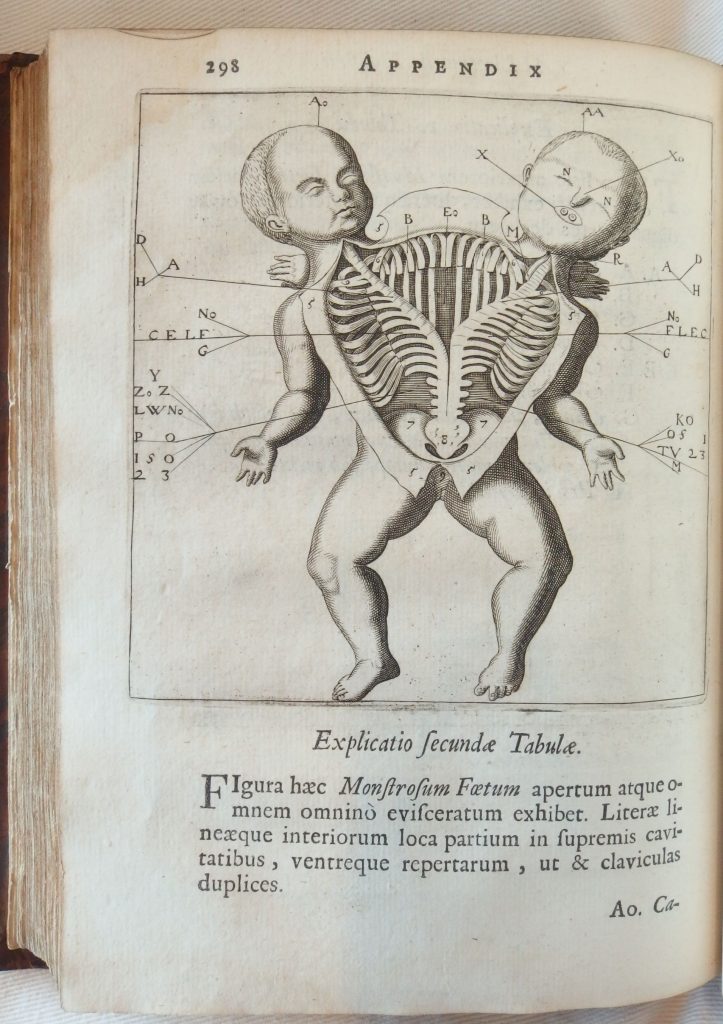
By Professor Anne Dunlop, with Dr Cordelia Warr, Connecting Collections Project, 2016-2019
The Connecting Collections project is an incubator for research on images and ideas of the body in the period between about 1400 and 1700. So far, the project has resulted in a special edition of the Bulletin of the John Rylands Library 95/2 (2019) and an on-line exhibition on Foreign Bodies.
The exhibition grew from the 2016–2019 team research project led by Anne Dunlop of the University of Melbourne and Cordelia Warr of the University of Manchester. The project was inspired by the extraordinary early European art collections in the two cities. The goal was to encourage collaboration and new research across the two campuses. Contrbutors ranged from full professors to students in early stages of MA and PhD research, and they came from all over Australia and the U.K.
At the root of any idea of foreignness is basic, physical exteriority. The modern English ‘foreign’ derives from the Latin ‘fores’, and marked the fact of being on the other side of a door. The word first appears in the thirteenth century as ‘ferren’ or ‘foreyne’ with this sense of something physically outside. Calling something foreign always implies an idea of belonging or exclusion. It always begs the question, ‘foreign in relation to what?’
Defining foreignness – who belongs and who doesn’t – is a major contemporary issue, but the problem is not new. It has always been linked to ideas of the ‘proper’ or natural place of human beings. Ancient writers like Aristotle had offered theories of climate to explain differences in human customs and character. Christian Europeans believed that all humans descended from Adam and Eve: in his book De Civitas Dei (The City of God), Saint Augustine (354–430) argued that the Antipodes could not be inhabited since it would have been impossible for these descendants to have travelled to the other side of the world across unknown waters. A further belief was that there were three continents, Asia, Africa, and Europe, peopled after the Biblical flood by the descendants of Noah’s three sons. Faced with the ‘newly discovered’ peoples of the Americas, sixteenth-century Europeans debated whether they were human or not, an issue not fully resolved by Pope Paul III’s 1537 proclamation that they were (and should therefore be converted to Christianity by their conquerors).
The exhibition is focused on objects from about 1400 to 1700, mostly but not all made in Europe. It explores how such early modern images and objects constructed the foreign, the exotic, and the other in this period of intense social and artistic change – marked by the rise of cities and increasingly centralized nation states, European exploration of the world and colonization of large parts of it, free and forced mass migrations of peoples, and newly globalized trade. In this moment of new and intense mobility, objects were also as migrants; they were made of commodities and designed to be exported, imported, and traded. Such objects moved and keep moving, now virtually, and in the process they can say something about people who have collected them or places they have come from.
To explore foreignness and object culture, our team chose three themes: Global –Local; Monstrous – Marvellous; and Bodies – Inside & Outside. Each theme is intended to highlight a different kind of foreign body, a different relation of interiority and exteriority, belonging and exclusion.
More information here.
Monstrosum fœtum (Monstrous foetus), in Fortunio Liceti, De monstris (On monsters), with preface and appendix by Gerard Blasius (Amsterdam: Andreas Frisius, c. 1665), p. 298. © The John Rylands Library.
Environment, Emotion and Early Modernity
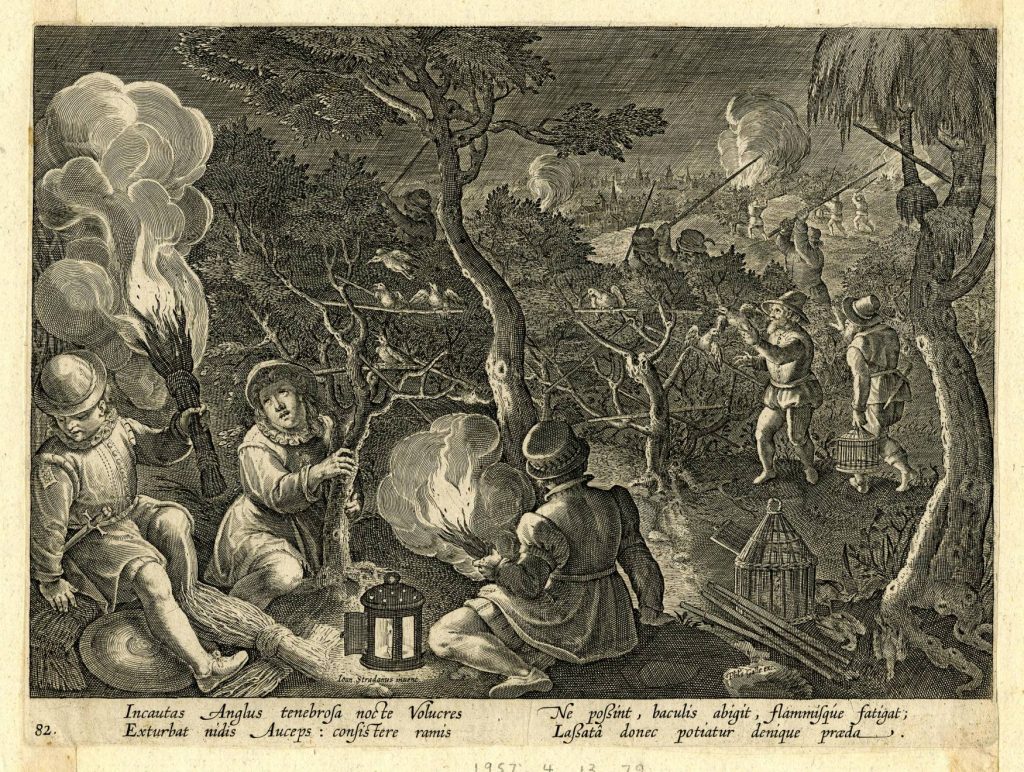
By Dr John Morgan
This project explored the inter-relationships between bodies, emotions and environments in a variety of early modern contexts. The project started life as a John Rylands Research Institute project scoping the Rylands’ collections for materials relevant to the histories of environment and emotion. Archival research was undertaken by Dr James Bowen and culminated in a workshop showcasing material in the Rylands, such as the description of the 1526 Chat Moss bog burst and the correspondence of eighteenth-century parson-naturalist Gilbert White. The workshop brought together scholars working on environment and emotion, and the papers presented there evolved into a special issue of Environment and History. Papers in this volume are due to be published in 2022, and explore the embodied and environmental expression, constitution and practice of emotions in the early modern world. The collection features the research of current University of Manchester staff Professor Sasha Handley (on posset pots and the affective communities of the early modern wedding rite) and Dr Rachel Winchcombe (on emotional eating in early America), and former colleagues Dr John Morgan (on the emotional ecologies of pigeons in the early modern Atlantic world) and Dr John Lee (on the emotional world of early modern Korean forestry).
After Jan van der Straet (attributed to Jan Collaert II, published by Philips Galle), Bird Hunt at Night, Antwerp, c. 1596, engraving, 197 x 261 mm. The British Museum, 1957,0413.79. © The Trustees of the British Museum
GHOST: Geographies and Histories of the Ottoman Supernatural Tradition
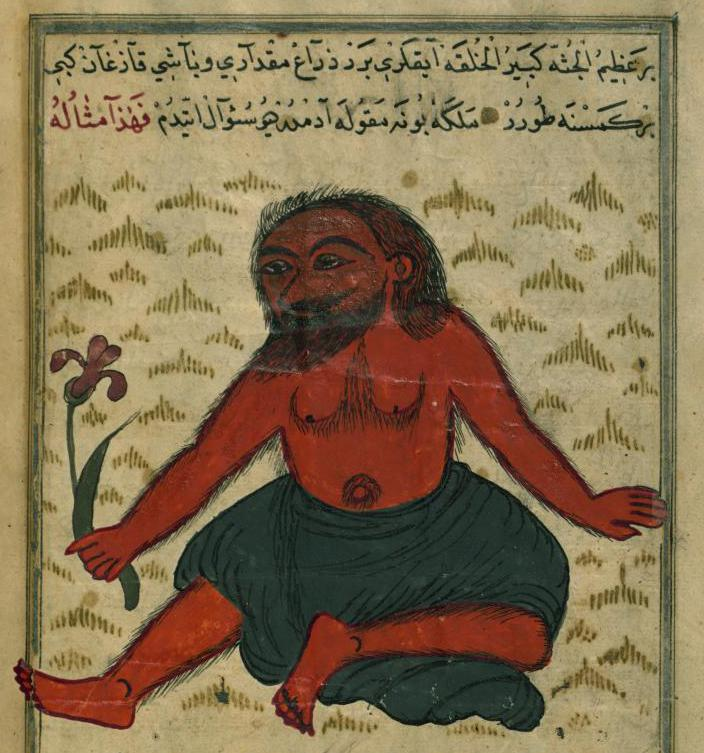
By Dr Ethan L. Menchinger, Collaborating Researcher of a European Research Council Consolidator Grant-project, 2018-2023
My research for GHOST explores the theological side of the Ottoman “supernatural” and seeks in general terms to understand how the empire’s Muslim subjects grasped strange events, the inexplicable, or the uncanny. I am now preparing three articles to this end. The first treats a famous Ottoman victory in 1596 at the battle of Haçova (Mezőkeresztes). Ottoman eyewitnesses and later sources saw this victory as miraculous, with claims that God sent aid in the form of angels, spirits, or invisible holy men (ricalullah). Others credited the triumph to the numinous power of relics of the Prophet Muhammad, which the sultan had brought to the battlefield. What exactly did sources say happened that day? And what do these accounts tell us more broadly about how Ottomans thought about their empire, its historical role, and its relationship to the divine?
The second article revisits fatalism/predestinarianism in the empire. Most Ottoman historians today would say that Ottoman “fatalism” is an Orientalist trope. To what extent was this the case? Were early modern Ottoman Muslims “fatalists” in any sense? I outline the problem as a dilemma at the heart of thought on God’s foreknowledge and will and human action, and explore how it shaped wider views of disease and warfare, respectively, in the sixteenth to eighteenth centuries. This article takes “fatalism” seriously as a complex theological issue that produced complex responses, as well as for what it can reveal about our subjects: Muslim inhabitants of the empire, and how they saw their place as worldly creatures, spiritual beings, and moral agents in a larger divine order.
Last, I am preparing an article on pious and impious doubt. Doubt sits uncomfortably in Ottoman studies at the moment. While several scholars have written on awe and wonder, both pious and proper responses to inexplicable phenomena, what happened when people resisted belief? When, in spite of gaining knowledge of something through sense, reason, or revelation, they wavered and remained unsure? What sorts of discourses (moral, legal, mystical, etc.) surrounded doubt? And where did doubt sit in relation to other categories of mind, like awe or ignorance?
The Monster of Gog and Magog, in Zakariya ibn Muhammad Qazwini and Muhammad ibn Muhammad Shakir Ruzmah-‘i Nathani (Scribe), Aja’ib al-makhluqat. 1121 AH/AD 1717. The Walters Art Museum, W.659.190B.
Little Cities
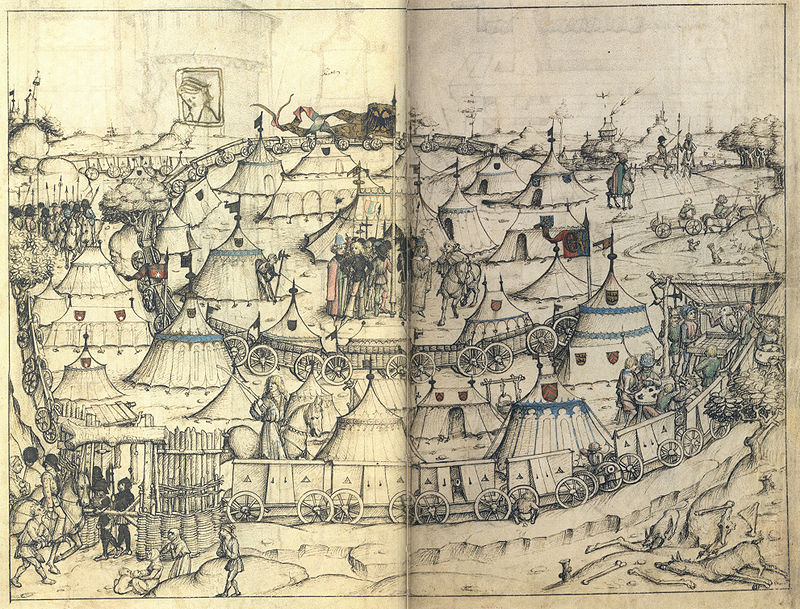
By Dr Emily Rowe
Before moving on to King’s College London, where she holds the position of a Lecturer in Early Modern Literature, Emily has developed her new project on early modern military camps at Manchester. ‘Little cities’ is an interdisciplinary study of early modern military camps that combines literary analysis and historical research to uncover the social and emotional experience of camp life. This project is an intervention into military history that will investigate how social belonging and difference, trauma, and wellbeing were experienced in the camp. By understanding the camp as an urban microcosm and shifting our focus away from military leaders and onto common soldiers and other civilian members of the camp, including medics, women, and sutlers, this project uncovers the social, emotional, and sensual experiences of life in the camp and its status as a mobile, porous, and diverse space.
Military camp, Housebook of Wolfegg Castle (c. fifteenth century)
Magic, Witches and Devils in the Early Modern World
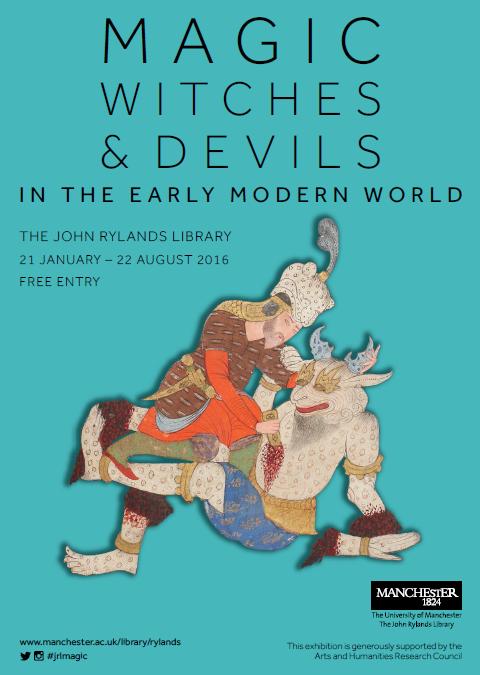
By Dr Jenny Spinks and Professor Sasha Handley, exhibition at the John Rylands Library (21 January 2016-22 August 2016)
The John Rylands Library is rich in printed and manuscript materials that reflect early modern cultural, intellectual and social preoccupations with magic, the supernatural, and the extraordinary properties of the physical world. This exhibition vividly illuminates how early modern people understood, reported, depicted and debated phenomena and themes including natural magic, astrology, witches, demons and the possessed, prophetic states, dreams, and mechanical illusions.
The exhibition presents a fresh and accessible reassessment of how debates about and elements of magic and the supernatural played out in early modern print (and to some extent in manuscript and material) culture. The exhibition is based around the concept of the ‘expanding’ world because it aims to demonstrate how new ideas and experiences in Europe from c.1480-1800 prompted intensive debates about magical, diabolical and supernatural events, and about how to deal with them as individuals and societies. New religious concerns, scientific developments, legal changes, and encounters with new lands and peoples led to new ways of reporting, representing and debating magic and related phenomena.
Rather than charting the traditional shift to a more ‘rational’ world (though it takes account of sceptical views of the supernatural), the exhibition predominantly explores how beliefs in the power of magic, witchcraft and associated phenomena persisted and adapted to changes in the early modern world, even while sometimes taking on new forms. The exhibition is intended to be visually exciting and to make connections across themes that are fundamentally early modern but nonetheless recognisable and relevant to modern audiences.
For more detailed information about some of the items on display, and ideas underpinning the project, please refer to the following online essays:
Magic, Witches and Devils in the Early Modern World, Arts & Humanities Research Council blog
Magic, Witches and Devils in the Early Modern World, British Academy blog
Ferdowsi, Shahnamah, Persian MSS 9, 910 and 932 (1542): Magic, Witches and Devils in the Persian ‘Book of Kings’, Manchester Medieval Society blog
Ulrich von Lilienfeld, Concordantiae caritatis, Latin MS 69 (c.1460-80): Cleansing the Home of Evil Spirits: Sweeping Magic in the Concordantiae Caritatis (Latin MS 69), John Rylands Special Collections blog.
Pseudo-Roger Bacon, Tractatus de Nigromatia, Chetham’s Mun.A.4. 98 (c.1500s): ‘Conjuring spirits in the Tractatus de Nigromatia, Chetham’s Library blog
Print publications relating to the exhibition material:
Magic, Witches and Devils in the Early Modern World: Exhibition Catalogue, ed. by Jennifer Spinks, Sasha Handley and Stephen Gordon (Manchester: John Rylands Library, 2016). ISBN: 9780863730931
Stephen Gordon, ‘Necromancy and the Magical Reputation of Michael Scot: John Rylands Library, Latin MS 105’, Bulletin of the John Rylands Library 92 (2016), 73–103. DOI: 10.7227.BJRL.92.1.4
Jennifer Spinks, Sasha Handley and Stephen Gordon, ‘Curating Magic at the John Rylands Library: the 2016 exhibition “Magic, Witches and Devils in the Early Modern World”’, Bulletin of the John Rylands Library 92 (2016), 105–114. DOI: 10.7227.BJRL.92.1.
Media Appearances:
Radio 2 Arts Show with Jonathan Ross (26 May 2016)
Hyperallergic online magazine (March 22 2016)
That’s Manchester TV (February 10 2016)
Manchester Evening News (January 25 2016)
Exhibition poster.
Marcantonio Raimondi and Raphael
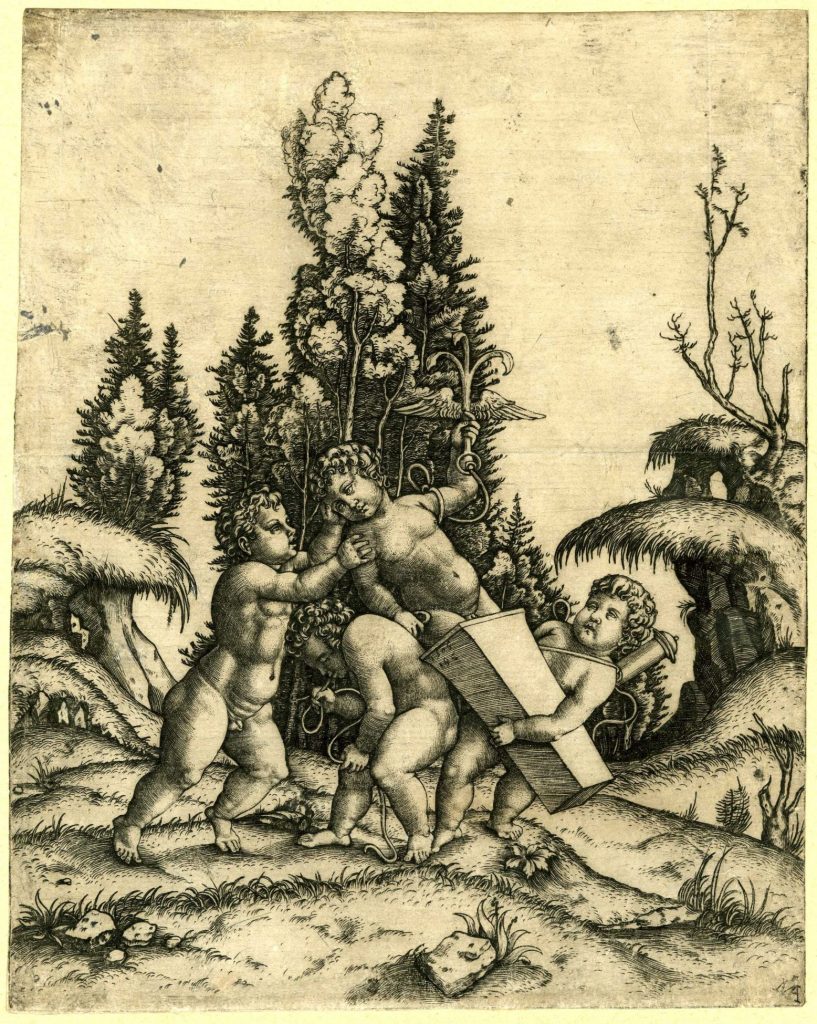 By Dr Edward Wouk
By Dr Edward Wouk
Marcantonio Raimondi (c. 1480–c. 1534) changed the way European audiences approach art. Through his intimate partnership with Raphael, he first enabled artists to disseminate their designs in multiple impressions, thereby launching a revolution in visual communication that still reverberates in our own information age. Yet Raimondi has long been considered an enabler rather than an artist, his engravings relegated to the status of referential copy, not art. Focusing on understudied collections of Raimondi prints in the Whitworth Art Gallery and the John Rylands Library, the exhibition Marcantonio Raimondi and Raphael aimed to restore Raimondi’s status as an important independent artist. Marcantonio Raimondi and Raphael was the first exhibition devoted to the engraver’s work in over forty years and the first ever in the United Kingdom. Co-curated by Edward Wouk and David Morris, it featured major loans from The British Museum, The Victoria and Albert Museum, The Ashmolean, The Fitzwilliam, The Cantor Museum, Standford University, and Liverpool City Libraries.
The exhibition gave rise to two major scholarly publications: a collection of essays emanating from a conference, which appeared as a special number of the Bulletin of the John Rylands Library and a catalogue, published by Manchester University Press, entitled Marcantonio Raimondi, Raphael and the Image Multiplied. University of Manchester undergraduate and postgraduate students were involved in every stage of the exhibition, from helping to select objects and seeing them through conservation, to writing wall texts and catalogue entries, to developing and delivering public programming for a wide range of audiences. UoM students were joined by an international team of scholars who participated in a series of object-based workshops supported by the British Academy and contributed to the catalogue and volume of essays. The exhibition and accompanying publications received widespread critical and scholarly acclaim. They helped establish an important precedent for the co-production of historical exhibitions at the Whitworth by joining research, pedagogy and engagement into a collaborative and multi-voiced model of curation.
Marcantonio Raimondi, Cupid and Three Putti, 1506, engraving, 239 x 194 mm, The Whitworth, The University of Manchester, P. 3095, Presented by George Thomas Clough in 1921. © The University of Manchester.
Microscopic Records: The New Interdisciplinarity of Early Modern Studies, c. 1400–1800
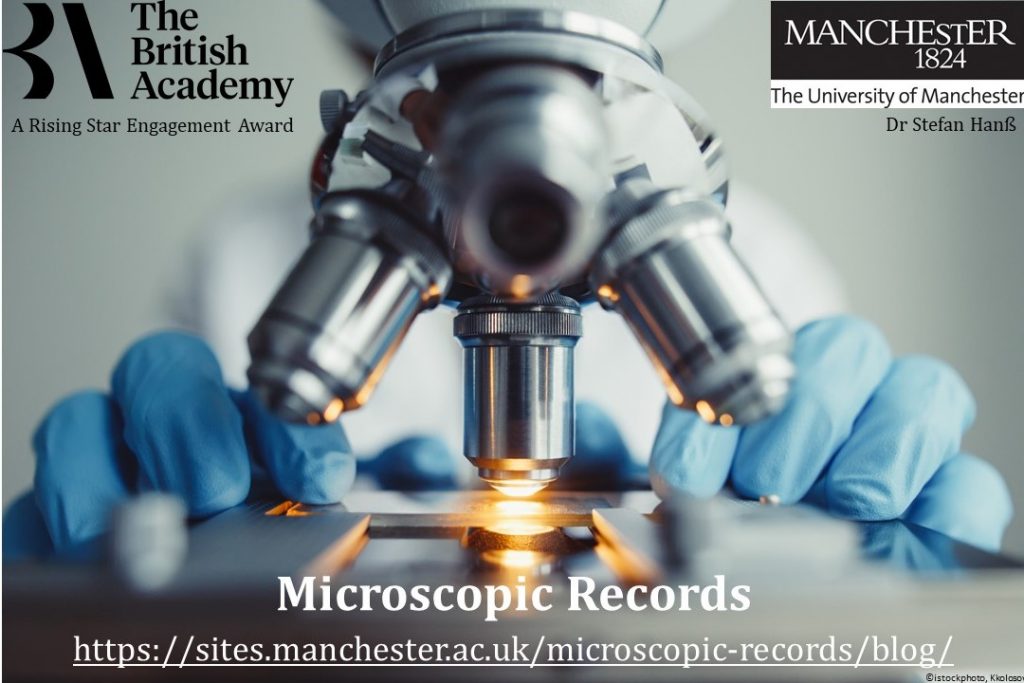
By Dr Stefan Hanß, British Academy Rising Star Engagement Award
Microscopic Records: The New Interdisciplinarity of Early Modern Studies, c. 1400–1800 took place at The University of Manchester on 29 September–1 October 2020, thanks to the generous support of the British Academy.
This British Academy event explored early modern engagement with small-scale matter—a material world which is hardly seen and often surprisingly active—as well as the information embedded in such small-scale early modern material records. This event’s goal was to question and broaden the kind of knowledge historians of early modern material culture may acquire about the past. Objects’ microscopic records reshape our understanding of the role of things in past societies, wherefore archaeologists pioneered the use of technology and historians explored the value of remaking experiments in laboratories and beyond. By asking how such methods can advance our knowledge about the early modern past, this event established pathbreaking interdisciplinary cultures that make science a crucial element of a historian’s toolbox. By testing the use of scientific methods for broadening our understanding of the early modern period and its material cultures, this British Academy Rising Star event established new interdisciplinary collaborations linking the humanities with the sciences.
The event comprised several masterclasses and a symposium that linked Early Career Researchers with key leaders of the field. The event has been designed in close collaboration with scientific laboratories in the UK and the US. An edited volume is forthcoming.
For more information, see the Microscopic Records Blog.
Royal Women, Cultural Exchanges, and Rus’ Ecumenical Marriages, circa 1000-1250
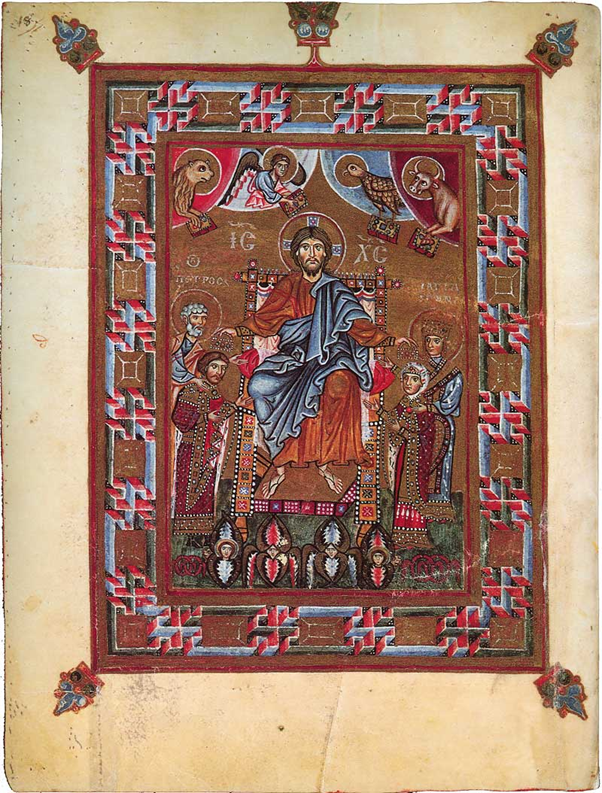
By Talia Zajac, Leverhulme Early Career Fellowship, 2020-23
This inter-disciplinary project investigates the role of royal brides sent to and from Rus’ (medieval Ukraine, Belarus’, and Russia) as political actors, religio-cultural patrons, and cultural ‘bridge-builders’ between Byzantine Orthodoxy and Latin Christianity (Roman Catholicism) during the eleventh to thirteenth centuries. Through close reading of narrative texts, legal documents, and material objects owned by, commissioned by, or otherwise connected with these women, the project examines representative case studies of royal brides who enabled cultural and religious exchanges between European royal courts through their dynastic marriages.
Despite accepting Christianity from Byzantium in 988/989, the ruling clan of Rus’ continued to intermarry with Latin Christian dynasties across Europe, including with the rulers of Anglo-Saxon England, France, Germany, Austria, Scandinavia, Bohemia, Poland, and Hungary. Through their journeys to marry in a foreign court, royal brides carried with them religious practices, social customs, books, and material objects across geographical and confessional boundaries, enabling cultural and religious exchanges across Europe.
Drawing on insights into identity formation and transcultural exchanges from sociology and cultural anthropology as well as the exercise of female political power analysed in the burgeoning field of queenship studies, the project uncovers the roles that these women assumed after their dynastic marriages. It seeks to address such questions as: how did these women gain and maintain power in the new court at which they found themselves? To what extent did they adapt to the cultural norms of the courts into which they married? Did they maintain their natal dynastic or religious identity or did they develop hybrid identities? What role did religion play in the preservation of their ‘otherness’ or the assumption of new identities? When and how did religious differences between Byzantine Orthodoxy and Latin Christianity become a barrier to marriages?
Material objects offer a neglected source of evidence for investigating some of these questions. For example, one of the planned outcomes of the project will be an English translation and commentary on the personal prayer-book of Gertruda of Poland (d. 1107/1108), the wife of the Rus’ prince Iziaslav Yaroslavich (d. 1078), the so-called ‘Codex Gertrudianus’. Gertruda’s prayer-book (Cividale del Friuli, Museo Archeologico Nazionale, Archivi e Biblioteca, codex 136) includes Latin prayers she commissioned on separate folia and inscribed on the margins of an existing lavish tenth-century psalter, originally made for Bishop Egbert of Trier (977– 993). These Latin prayers, including one for the pope, are juxtaposed with Byzantine-style illustrations commissioned by Gertruda and attributed on stylistic grounds (including their use of Greek and Cyrillic titles) to a Rus’ scriptorium. The prayer-book thus offers an intimate glimpse into the ways in which foreign brides in mixed marriages negotiated emerging confessional differences as well as the hybridity of artistic and devotional practices that could result from their patronages and cross-confessional travels. Through such books and objects, the project thus examines cultural and religious exchanges between Eastern and Western European courts facilitated by women travelling to and from Rus’ as royal brides, contributing to a wider understanding of the religious and cultural diversity present in the medieval past.
Christ in Majesty, together with Saint Peter and Saint Irene, crowns a royal couple, Cividale del Friuli, Museo Archeologico Nazionale, Archivi e Biblioteca, codex 136, folio 10v, circa 1078-1086/1087. Public Domain Image: https://commons.wikimedia.org/wiki/File:Christ_irina,_Egbert_Psalter.jpg.
Scientific Research on Early Modern German Haircare Recipes
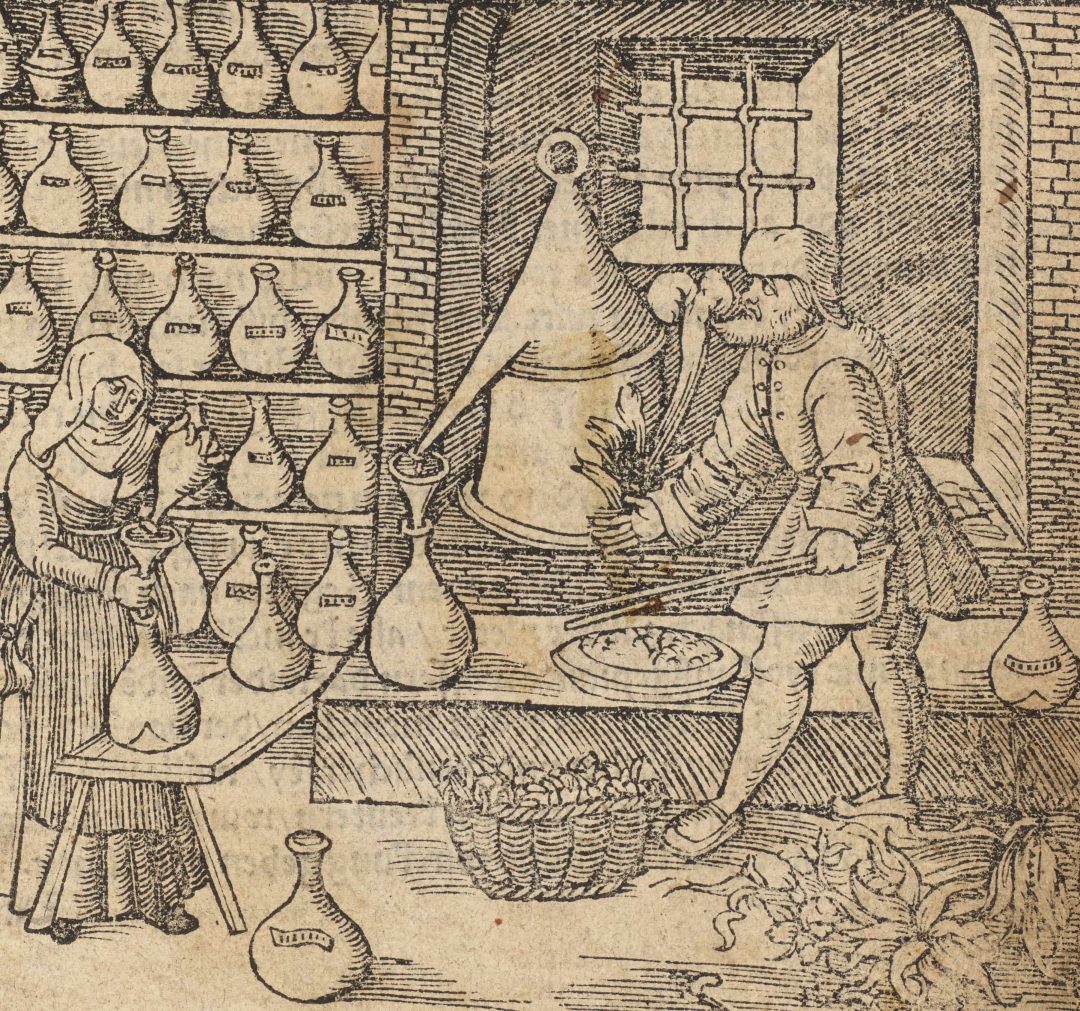
By Prof Stefan Hanß, The John Rylands Research Institute and Library, Pilot Grant, 2021/22
Results of this research are in press, and have been presented at the German Historical Institute London Lecture series (podcast available here). This research has been also discussed in a GHIL interview: https://www.ghil.ac.uk/publications/podcasts/analysing-renaissance-recipes
Stefan Hanß has been awarded a Pilot Grant by The John Rylands Research Institute and Library Manchester to conduct scientific analysis of haircare recipes from early modern Germany. For this project, Stefan will continue to collaborate with material scientists from the UK and Israel, building on conversations originating from The British Academy event Microscopic Records: The New Interdisciplinarity of Early Modern Studies, c. 1400–1800. This event brought together established scholars and early career researchers of different disciplinary backgrounds conducting research on early modern material culture. The John Rylands Research Institute and Library Pilot Grant project now builds on such conversations to explore interdisciplinary ways to study the material culture of early modern haircare. Stefan’s project examines which kind of materials have been used to treat, cure, dye, or alter hair in sixteenth-century Germany, and how this relates to other medicinal and cosmetical recipes from that period. What some historians have called the material Renaissance was a period characterized by a diverse and dynamic engagement with recipes; this project now explores what kinds of materials were use in which ways, and it presents a laboratory-based analysis of such materials. Results from this research will feature into Stefan’s Leverhulme Prize project on the history of hair in the early modern German and Spanish World, a project which starts in September 2021.
© The John Rylands Library, University of Manchester.
The System of Lazzaretti in the Early Modern Mediterranean
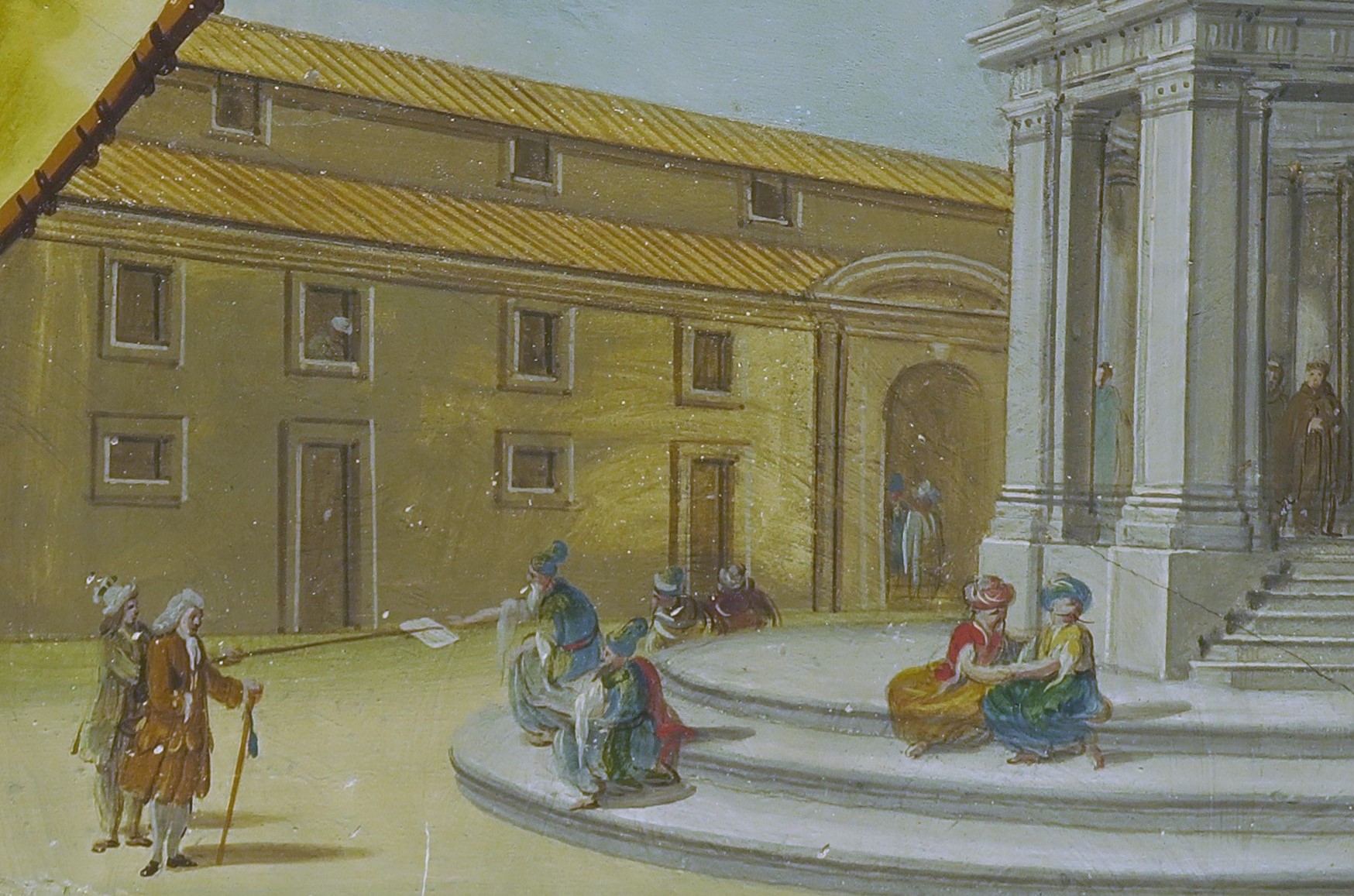
By Dr Marina Inì, 2021-22
This doctoral project is the first comprehensive study of quarantine centres (lazzaretti) in the late seventeenth and eighteenth-century Mediterranean. By adopting a connective approach and analysing several quarantine locations, the project presents an innovative analysis of quarantine by considering its impact on the cultural and social history of the Mediterranean. The project’s methodology blends cultural and intellectual history with the study of material and spatial culture and situates the analysis of quarantine within the most recent trends in historical studies, such as the ‘spatial turn’ and the ‘mobility turn’.
During the early modern period, merchants, travellers, sailors and goods were quarantined and disinfected inside vast complexes built in port cities and trading posts on the most trafficked trade routes of the Republic of Venice (including the Balkan peninsula and the Ionian Sea), the Austrian Littoral, the states of the Italian Peninsula, Malta and France. Perfected by the Republic of Venice in its territories between the sixteenth and seventeenth centuries, lazzaretti and the health boards managing them during the eighteenth century progressively formed a sophisticated transnational system of plague prevention. The system allowed for the standardisation of quarantine practices to allow safe commercial exchanges with cities and regions occasionally hit by epidemics and, above all, with the Ottoman Levant and the Barbary Coast, where plague was considered endemic. Following the work of historians, such as Peregrine Horden, Nicholas Purcell and Eric Dursteler, who advocate for the study of the Mediterranean as a unit rather than a divided battlefield between Western Christianity and ‘Infidel’ East, the project emphasises the key role of quarantine in shaping the cultures and societies of the Mediterranean region between the late seventeenth and the eighteenth centuries.
The project examines a broad variety of themes contributing to the economic and socio-cultural history of the Mediterranean drawing attention to questions and practices relating to disease control, which go beyond the immediate public health issues caused by diseases; the analysis of quarantine measures involves greater questions linked to economic and social practices. Quarantine was based on the circulation of knowledge and information within the system of lazzaretti and its analysis is essential to understand the relationship between plague, quarantine, trade and the establishment of free ports (where custom taxes are reduced or absent). Through the study of lazzaretti, the project has explored contemporary medical and cultural ideas concerning the opposition between a ‘healthy’ West and ‘diseased’ Ottoman healthscape highlighting how these ideas influenced the application of quarantine. Lazzaretti are also analysed as a key part in the mobility of people and as a backdrop for cross-cultural encounters, providing key information on the movement of people, multilingualism and religious differences in the early modern Mediterranean. By exploring the everyday routine of quarantine, the project has, for the first time, analysed religious and food practices in quarantine, the social strata of staff and passengers and the working conditions inside lazzaretti contributing with new findings to our understanding of early modern life in Europe.
The study of the spatial arrangement of quarantine centres and material culture of lazzaretti has revealed unprecedented findings which enrich our understanding of the early modern theory of contagion, early modern ideas concerning the interaction between the body, the built environment and the materiality of objects. These findings have been published in the article ‘Materiality, Quarantine and Contagion in the Early Modern Mediterranean’ published in Social History of Medicine (2021) and the chapter ‘Architecture and plague prevention: the development of lazzaretti in the eighteenth-century Mediterranean’, forthcoming for the edited book Public Health in the Early Modern City in Europe, edited by Mohammad Gharipour and Anatole Tchikine (Palgrave Macmillan). The project will soon result in a monograph entitled: Quarantine in the Eighteenth-century Mediterranean: Premodern Continuities and Enlightened Changes.
Luigi Pallavicini, fresco in Palazzo Benincasa showing the piazza of the Lazzaretto, Ancona, 1788.
